DEVELOPMENTS IN THE EV INDUSTRY

UPSKILLING & RESKILLING
Helping to protect and improve quality of lif e


DEVELOPMENTS IN THE EV INDUSTRY

UPSKILLING & RESKILLING

With over nine decades of experience, The Beier Group has earned its place as an expert in the local manufacturing of technical textiles and personal protective equipment in South Africa. Our extensive knowledge, paired with operational expertise, underpins our role as leaders in these industries. As a proudly South African Group of Companies, we remain committed to Industrialisation, Transformation, and Development, all while upholding our vision of "helping to protect and improve the quality of life."
The Beier Group is a diversified group of manufacturing companies, each contributing to our mission of sustainability through an evergreen approach and inherent adaptability. Historically family-owned, the Group has undergone significant transformations, most notably in its ownership structure and most recent appointment of Warren Sachs as new Group CEO which marks a new era of leadership for the Beier Group. Warren worked closely with the late Hans Beier, our former Board Chairperson, and continues to work closely with Wolfgang Beier, former CEO, now Chairperson of the Beier Group Board.
The Beier Group remains rooted in its core values of respect, integrity, no-harm and shared value, with a deep passion for community upliftment and development.
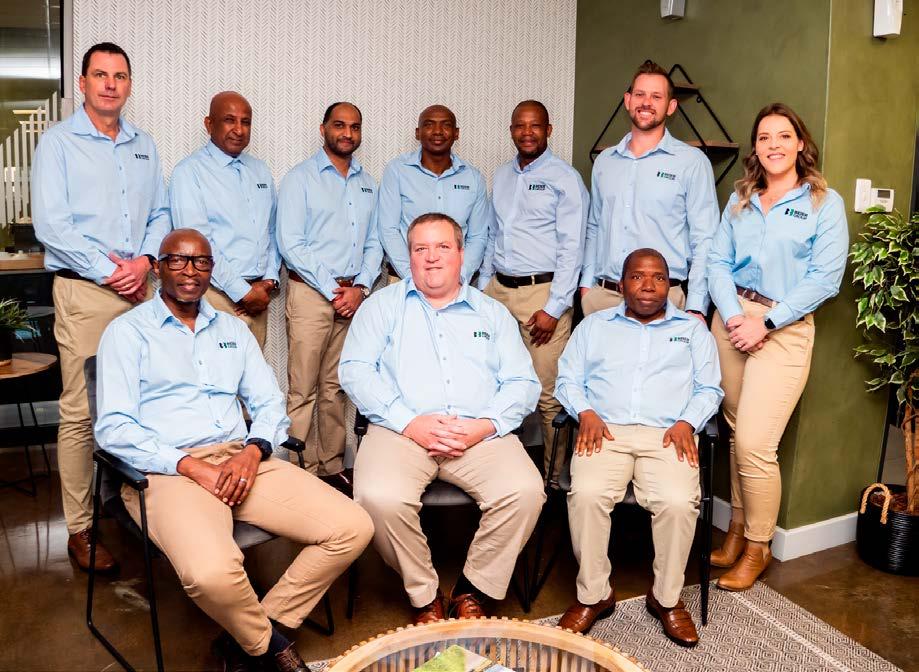
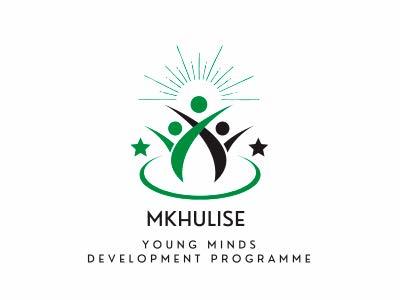

As firm believers that diversity is a driver of innovation, evident in our various operations, plants & processes. Our ownership and management structures are proof of our intent and continued commitment to our values.
A testament to this commitment is the recent establishment of the Mkhulise Young Minds Development Programme, a non-profit organisation inspired by the tireless efforts of the late Hans Beier. This program aims to enhance educational outcomes, making manufacturing a career of choice for future generations. By expanding the talent pool and stimulating the local economy, we strive to create a thriving, symbiotic ecosystem for South Africa's manufacturing and allied industries.
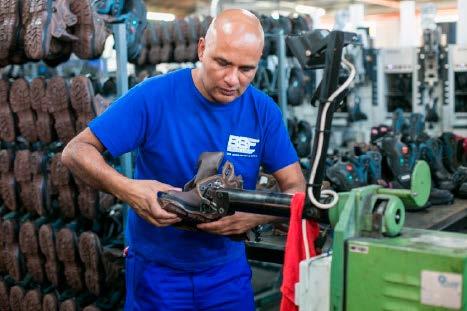
Beier Drawtex Healthcare specialises in advanced wound care solutions, with a vision of changing the face of advanced wound care through unique technologies and clinical excellence.
Our flagship product, Drawtex® wound dressing, is the first and only hydroconductive wound dressing available on the market. Using LevaFiber™ technology, it draws out large amounts of exudate and toxic components from the wound surface, promoting fast natural healing and is distributed both locally and globally. All our products are locally manufactured in a state-of-the-art facility.

www.drawtex.com
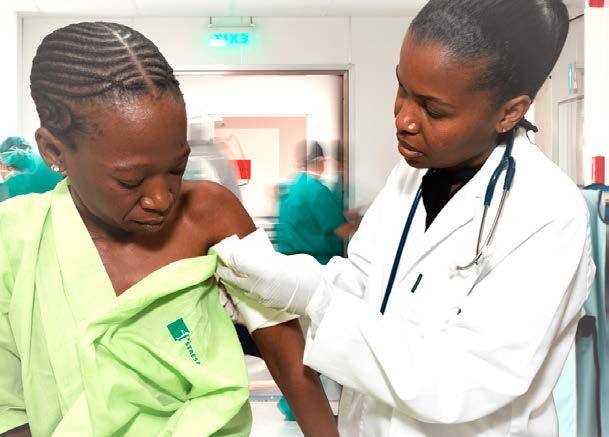
Neucoat is a PVC and PU coating plant that uses cutting-edge technology to produce an extensive range of coated fabrics such as tarpaulins, grain covers, dam liners, automotive vinyl, upholstery material and the very popular nomadic stretch tent. With our advanced knowledge, modern manufacturing processes and technical skills, Neucoat leads the field in innovative coated fabric product developments.

Beier Envirotec is a leading designer, manufacturer and supplier of industrial filtration and technical textiles. Our solutions include: dust capture and emission control through our specialized filter bags; the conceptualising and designing of industrial bag houses; installations and bag house maintenance; engineering services such as CFD modelling, control and optimization, and design, supply and implementation of sonic cleaning systems. Offering a range of existing and customisable textile solutions for your specific industry requirements.

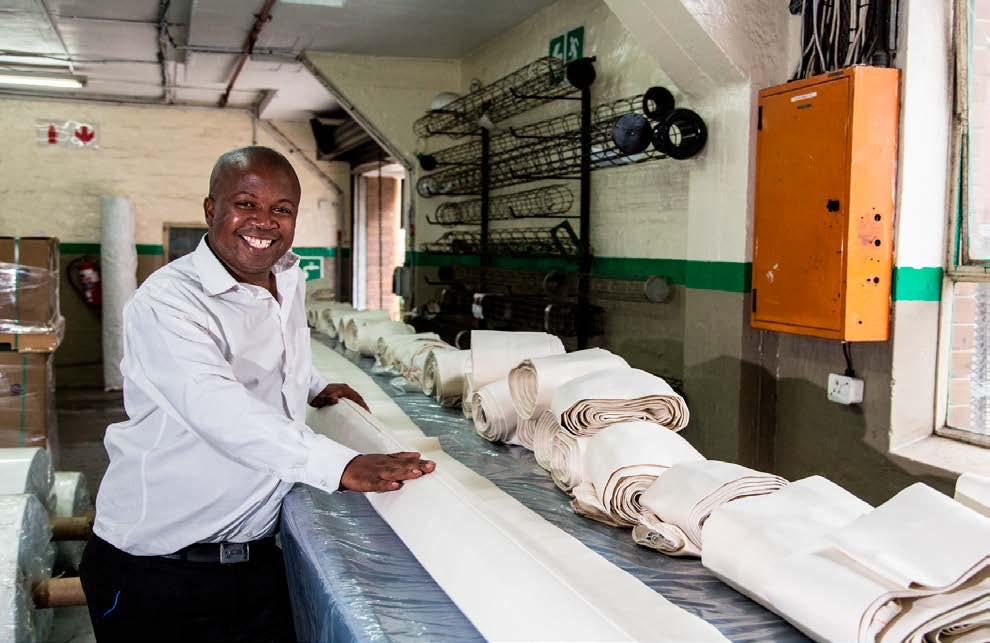
BBF Safety Group specialises in delivering integrated workplace safety solutions that help keep people safe at work, and maintain compliant working environments. Our comprehensive range includes body protection, fall protection, foot protection, head protection and thermal protection products designed for various industries and applications. Whether you’re safeguarding workers from extreme conditions or improving overall workplace safety standards, our expert team is committed to helping you minimise risk and enhance productivity.





























Tashne Singh editor@sabusinessintegrator.co.za
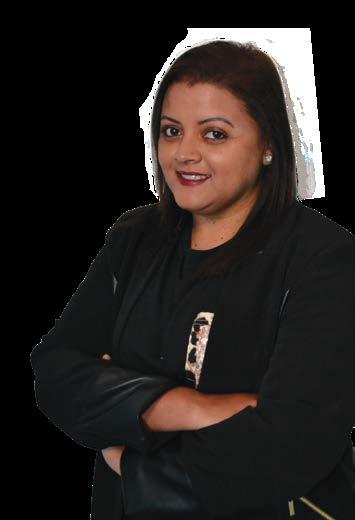


October is Transport Month. If one sits and really thinks about it, transport is the foundation that many industries, businesses and the public are highly reliant on.




























Each industry faces some or other form of challenge, but when the transport industry faces difficulty, it has the capacity to bring many things to a halt. Goods can't be transported, people can't get to work/school etc.
According to reports, Transport Minister Barbara Creecy said earlier this year (2024): “... we would all agree that an efficient and functioning transport sector that moves people and goods safely, speedily and affordably across the length and breadth of our country is the key to a successful economy."
She further added, “In recent times, there has been a disconnect between this vision and the realities of our transport system and our national Transport Department. Our sector is not operating as either an effective economic facilitator or as a much-needed social service.”
While we certainly have challenges in SA, this year feels a little bit different. There seems to be a tentative optimism that could potentially translate into postive outcomes. If all key stakeholders and leaders across all spheres work collaboratively and deliberately, they have the power to bring about sustainable positive change which will unlock further opportunties to benefit all South Africans.






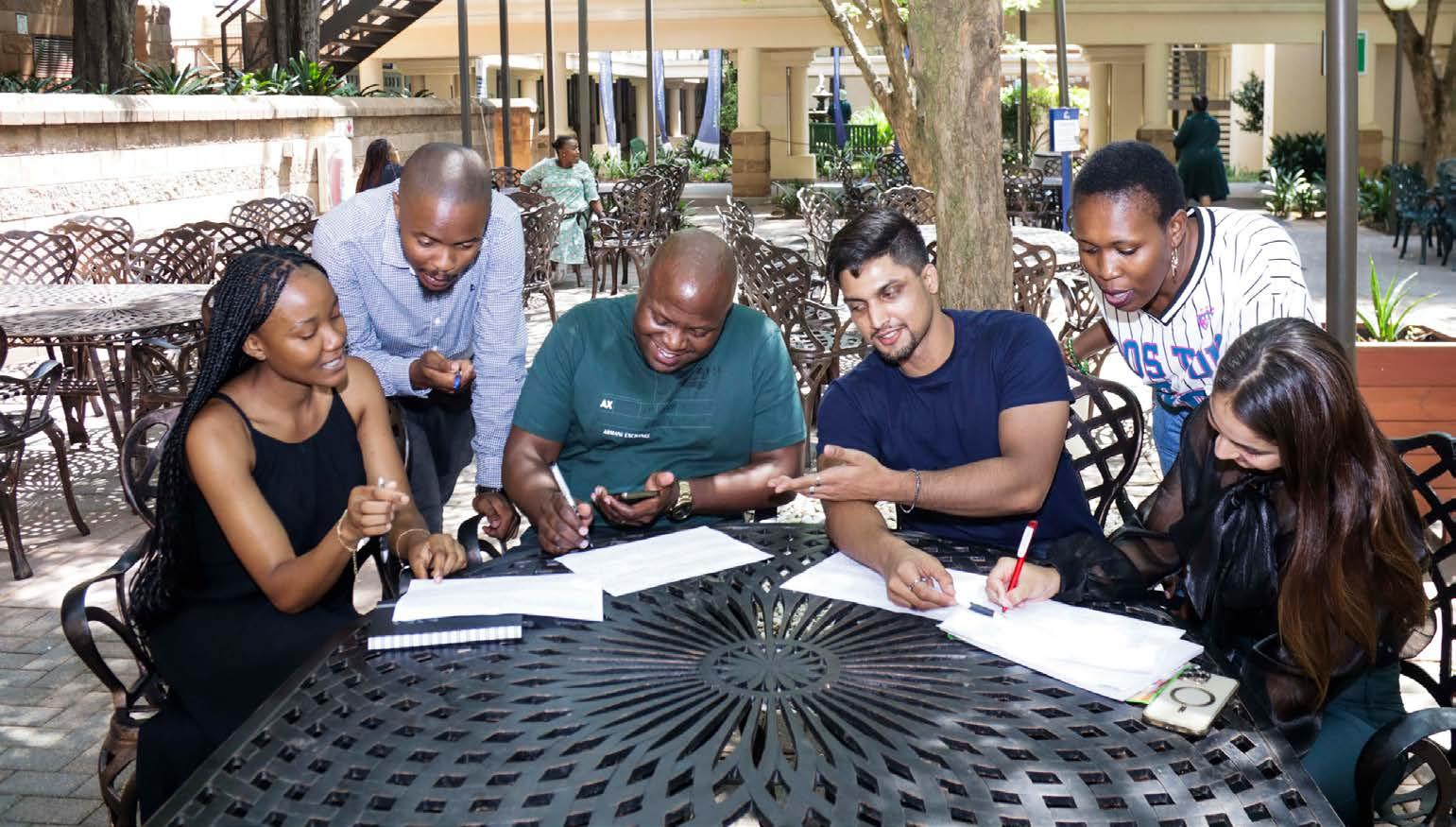
Let our experts empower you to tackle complex issues, critical development, and policy challenges and effect positive change in South Africa and Africa. Apply now for our 2025 July intake for our academic programmes at the Wits School of Governance.
• Postgraduate Diploma in Management (Public and Development Management)
• Postgraduate Diploma in Management (Public and Development Sector Monitoring and Evaluation)
• Postgraduate Diploma in Management (Security)
• Master of Management (Research)

• Master of Management in Governance (General, Public Policy, Public and Development Sector Monitoring and Evaluation, Development and Economics, and Governance and Management)
Closing date: 31 October 2024
Contact
Email: academicprogrammes.wsg@wits.ac.za
Telephone: +27 11 717 3520





























PUBLISHER
Elroy van Heerden-Mays elroy@mediaxpose.co.za































PUBLISHED BY DISTRIBUTION Media Support | On the

6 Carlton Crescent, Parklands, 7441 Tel: 021 424 3625 Fax: 086 544 5217 E-mail: info@sabusinessintegrator.co.za Website: www.mediaxpose.co.za
Disclaimer: The views expressed in this publication are not necessarily those of the publisher or its agents. While every effort has been made to ensure the accuracy of the information published, the publisher does not accept responsibility for any
The
EDITOR
Tashne Singh editor@sabusinessintegrator.co.za
SUB-EDITOR
Jacky Dyer sub@mediaxpose.co.za
CONTENT MANAGER
Wadoeda Adams artwork@mediaxpose.co.za
DESIGNERS
Anja Bramley | Shaun van Heerden-Mays | Tia Arendse
EDITORIAL CONTRIBUTORS
Bidvest International Logistics (BIL)
Mandisi Dube
Carike Karsten
Dumisile Le Roux
Anton Visser
ADVERTISING SALES MANAGER
Rashieda Wyngaardt rashieda@sabusinessintegrator.co.za
ADVERTISING SALES
Tarryn Napier tarryn@sabusinessintegrator.co.za
MEDIA PARTNERSHIPS | EDITORIAL ASSISTANT
Maurisha Niewenhuys maurisha@mediaxpose.co.za
WEBSITE DEVELOPER/ADMINISTRATOR
Justin McGregor justin@mediaxpose.co.za
DIGITAL MARKETING MANAGER
Juhi Rampersad juhi@mediaxpose.co.za
DIGITAL AND SOCIAL MEDIA
Kyla van Heerden social@mediaxpose.co.za
DISTRIBUTION & SUBSCRIPTIONS
Shihaam Gyer distribution@mediaxpose.co.za
CHIEF FINANCIAL OFFICER
Shaun van Heerden-Mays shaun@mediaxpose.co.za
HR MANAGER
Divan Lategan hr@mediaxpose.co.za
RECEPTIONIST
Kayley Townsend receptionist@mediaxpose.co.za

At TRAC, we prioritise proactive measures over reactive responses. As part of our commitment to ensuring the safety and efficiency of the Maputo Corridor, we conduct daily route patrols. These patrols are carried out by our dedicated road patrol and emergency response units, aptly known as TRACAssist.
TRACAssist, together with the TRAC Helpdesk, is available 24/7/365 to assist road users with emergencies, incidents or queries along the Maputo Corridor.

Under the leadership of Nokuthula Selamolela, the Food & Beverages (FoodBev) Manufacturing SETA has successfully integrated advanced financial strategies and rigorous educational standards that reflect the best practices from both the private and public sectors. Selamolela shares some insights about the growth journey of the FoodBev SETA, and how it continues to drive impact.
SELAMOLELA | FOODBEV MANUFACTURING SETA CEO
Food and Beverages Manufacturing (FoodBev SETA) is a public entity and one of the 21 Sectoral Education and Training Authorities. Its mandate is to facilitate access to training and skills development for employees and new job applicants in the sector through various interventions.
Nokuthula Selamolela, at the helm of FoodBev Manufacturing SETA, has successfully spearheaded initiatives that foster innovative training and development programmes, which have transformed the organisation into a beacon of excellence in the food and beverage sector. Her leadership has significantly
Tell us a bit about the FoodBev Manufacturing SETA rebrand.
The decision to embrace our new corporate identity was a strategic move informed by our understanding of stakeholder perceptions, the evolving dynamics of our sector, and our commitment to staying ahead of the curve. We recognised the need to align our brand with our vision for the future, reflecting our core goals and values as an organisation. This rebrand is not just about a new look; it signifies our dedication to empowering individuals through skills development and fostering innovation. Our new corporate identity symbolises a commitment to change and growth. The new payoff line, 'Empower. Innovate. Elevate.' perfectly encapsulates our commitment to transformation. This rebrand ensures our identity remains contemporary and relevant in an ever-changing world, enabling us to better engage with modern audiences and address emerging needs.
Tell us about the successes of the skills development programmes. Our skills development programmes have led to increased employment and created opportunities among trained individuals, enhanced sector-specific competencies, and the development of critical occupational skills. These programmes have contributed to individual career advancement, improved sector skills, and supported the sector’s adaptation to new technologies and methodologies.
We recently conducted a study to evaluate the impact of our skills development programmes on unemployed learners graduating from these initiatives. Over 900 learners from various learning programmes were sampled
contributed to addressing skills gaps in the sector, ensuring a more skilled workforce and enhancing overall sector performance. Through strategic partnerships and targeted interventions, she has positioned FoodBev Manufacturing SETA as a key player in driving sectoral growth and sustainability.
As a true pioneer, Selamolela's visionary leadership and her commitment to good governance, stakeholder engagement, and talent development have been instrumental in FoodBev Manufacturing SETA's achievements including achieving 100% of targets and consecutive clean audits.
for inclusion in the impact study. The key findings show the following:
• 54% of learners surveyed reported that they are currently employed. Of those, 52% are employed by the sector.
• 71% of learners who completed FoodBev Manufacturing SETA funded internship programmes have secured fulltime employment.
• Over 80% of participants in artisan, learnership, and internship programmes have successfully secured sector-related employment.
Over the past three financial years, FoodBev Manufacturing SETA has established 71 strategic partnerships with public and private entities, benefiting 19,841 employed and unemployed learners.
Some of our highlights include:
• A collaboration with Prodigy Business Services to develop a campaign aimed at educating consumers in the North-West Province on identifying counterfeit food and beverage products. This programme will equip 100 unemployed learners with valuable skills.
• The Wakanda Food Accelerator, which supports food start-ups in growing and scaling their businesses by providing access to cutting-edge food technology and market opportunities. This collaboration benefits 100 small, medium, and micro enterprises (SMMEs).
How is the FoodBev Manufacturing SETA driving enterprise development?
We actively support enterprise development through our funding programmes, particularly for small businesses. This includes providing grants and funding
that facilitate training and capacity-building, enabling small enterprises to improve their operations and scale effectively. This support has led to the creation of more robust business models and increased market participation by emerging enterprises.
We have launched the Delicious Festival Traders Academy, powered by FoodBev Manufacturing SETA, in collaboration with the DStv Delicious Festival. This initiative focuses on empowering individuals and SMMEs within the food, beverage, and hospitality sectors. By supporting informal SMMEs that meet specific criteria, the Academy delivers both immediate and long-term social and economic benefits. Furthermore, the project plays a crucial role in enhancing societal welfare by creating additional social and community development opportunities.
In collaboration with Duke University, we empowered SMMEs in our sector through cutting-edge training. Twenty-four selected SMMEs participated in the prestigious International Executive Entrepreneurship Development Programme (IEEDP), featuring expert-led sessions, immersive international experience, exposure to alternative markets and best practice benchmarking. This strategic partnership fosters entrepreneurial growth, global connectivity, and competitiveness for SMMEs.
Seventy-five percent of the delegates in this programme are women from diverse business backgrounds.
PepsiCo partnered with us to empower small businesses with the skills needed to operate and manage vending machine enterprises. This programme will benefit 100 participants across Gauteng, the Western Cape, and KwaZulu-Natal.
Another initiative we have successfully implemented for two consecutive years is an SMME programme where FoodBev Manufacturing SETA supported 10 SMMEs to attend the New York Summer Fancy Food Show, the largest food and beverage convention. This event provides an excellent platform for these SMMEs to enhance their skills, promote their products, expand globally, and network to form new partnerships. The feedback from participants has been very encouraging, with some already making significant progress in international markets.
How does the FoodBev Manufacturing SETA drive inclusivity?
Our Disability Programmes focus on creating opportunities and removing barriers for individuals with disabilities within the food and beverage manufacturing sector. Our efforts are also reflected in our partnerships, such as the one with rural women capacitated with baking skills, which supports women in earning a living and supplying bread to rural and township areas. Another significant partnership is with Cum Laude Institute, focusing on training people with disabilities in the Further Education and Training Certificate in Generic Management. This initiative benefits over 150 learners from Qwaqwa in the Free State.
What fundamental changes has the FoodBev Manufacturing SETA had to implement when considering the country’s realities?
We have initiated targeted training programmes to address unemployment by equipping individuals, particularly the youth and the unemployed, with relevant and appropriate skills required within the sector. We have also worked on enhancing the infrastructure for training delivery, ensuring accessibility and effectiveness even in remote areas. We have consistently enhanced our support for SMMEs, recognising their vital role in economic growth and job creation. This support includes tailored training designed to help SMMEs scale effectively.
FoodBev Manufacturing SETAs has a remarkable partnership with Universities South Africa (USAf), aimed at resolving historical debt for 761 students from 13 public universities. Due to high unemployment and inadequate funding, many students struggle to afford their tuition fees, which prevents them from graduating and obtaining their qualifications. This creates a cycle that contributes to higher unemployment, as these individuals remain unemployable. Our initiative focuses on assisting these students with their debt, enabling them to complete their qualifications and enhance their employability.
Additionally, we launched new qualifications as a strategic response to the evolving demands of the food and beverage manufacturing sector. These qualifications are designed to close the skills gap in emerging and critical areas within the sector. The response from sector stakeholders has been favourable, as these qualifications promise to enhance worker competencies, improve job
readiness, and increase employment opportunities.
How significant is the role of technological advancements in the sector?
Technologies such as automated production lines and robotics are increasing efficiency and reducing production costs in manufacturing processes. Advanced data analytics are helping companies optimise production, manage inventory, and forecast demand more accurately.
We have also observed technologies such as drones and sensors improving agricultural practices, leading to better crop management and increased yield.
Furthermore, sustainable practices, including energyefficient machinery and waste-reduction technologies, are helping companies reduce their environmental footprint. Technological advancements are pivotal in transforming the sector. We have embraced these changes by integrating modern technologies into our training programmes, ensuring that the workforce is adept at using new tools and methodologies that are becoming standard in the sector globally.
We are developing initiatives to foster innovation and entrepreneurship within the sector. These efforts include partnerships with tech companies to provide advanced training in automation and artificial intelligence (AI), as well as programmes designed to support start-ups in the food and beverage manufacturing sector, helping them scale and access new markets. Our goal is to keep the sector vibrant and globally competitive, and one of the key initiatives is the introduction of an online learning portal for our programmes to increase reach and access to a broader community.
As automation grows in the food and beverage manufacturing sector, coding and robotics skills are becoming highly sought after. To address this demand, FoodBev Manufacturing SETA partnered with Mirae Robotics and Automation Solutions to launch a skills development programme in the Free State. This programme focuses on training unemployed learners in coding and robotics applications. These technologies are used in areas like packaging, production lines, quality control, and inventory management, making these learners well-prepared for modern roles in the sector. The initiative successfully benefited 100 learners.
Another digital skills programme we launched, in collaboration with the Sedibeng District Municipality, is the International Digital Skills Programme. This initiative aims to equip beneficiaries with foundational advanced technology skills, enabling them to pursue in-demand competencies in the food and beverage manufacturing sector, such as digital trade, robotics, and artificial intelligence, with a focus on prioritising young women from townships and rural areas. By the end of 2024, one hundred learners will have completed this programme.
Do you feel there are misconceptions about the food and beverage sector?
Indeed, several misconceptions exist, particularly the notion that the sector offers limited career progression. Contrary to this belief, the sector provides opportunities ranging from technology integration and sustainability initiatives to research and development. This diversity positions the sector as a vibrant field with potential for innovation and career advancement.
What opportunities do you foresee?
In the short term, the sector can capitalise on the rising trend of health-conscious and environmentally sustainable products. There’s also potential for growth in the export of locally produced goods driven by global demand for uniquely South African flavours and products. The sector could see long-term significant advancements in integrating digital technologies, such as artificial intelligence (AI) and internet of things (IoT), to enhance production efficiencies and product personalisation. Furthermore, ongoing development in areas such as vertical farming and alternative proteins presents opportunities to redefine the scope and impact of the food and beverage sector on the national and global stage. Collaborating with government bodies, sector leaders, and educational institutions is essential to align efforts, share insights, and drive collective action toward common goals.
Since taking over as CEO, what have you been most proud of?
I am most proud of how we have leveraged my background in financial management and sector education to enhance strategic financial planning and educational frameworks at FoodBev Manufacturing SETA. This has resulted in more targeted and impactful skills development programmes, directly contributing to sector growth.
Since the publication of a White Paper encouraging the transition of the auto industry towards production and consumption of more Electric Vehicles (EVs), the Dept. of Trade, Industry and Competition (DTIC) reflects on the opportunities for investment in the EV sector and developments within the industry towards manufacture of EVs in SA.
The White Paper reads: “The primary goal of this White Paper is to set a course to transition the auto industry from primarily producing Internal Combustion Engine (ICE) vehicles to a dual platform that includes EVs in the production and consumption mix, alongside ICE vehicles in South Africa by 2035.”
Since the release of the White Paper, have there been any key developments?
The EV White Paper was released in December 2023. In February 2024, during the Budget Speech, Minister Godongwana announced support directed at encouraging local production of electric vehicles.
In June 2024, ITAC and SARS issued for comment draft amendments to APDP regulations and guidelines to support local production of EVs and their components.
In August 2024, the National Treasury published a draft Taxation Laws Amendment Bill (TLAB) that included an investment allowance for automotive companies investing in production capacity for electric and hydrogen-powered vehicles in South Africa.
The Private and Public sectors continue to invest in EV charging infrastructure across the country.
Could you highlight the key investment opportunities in the South African EV market?
A number of EVs are being made available for sale in South Africa; however, there is no local production of full

BEVs yet, while a number of OEMs are now producing hybrids. While EV charging stations are being installed, there is no local manufacturing of such stations in the country at this moment. However, South Africa and the SADC region are endowed with the minerals used to produce EV batteries.
Asia is known as an important manufacturing hub. What benefit is there for countries to view SA as a potential EV manufacturer of choice?
The South African automotive industry is 100 years old, meaning that it is an automotive manufacturing ecosystem that benefits from government support, mainly through the APDP. South Africa also has good trade relations with significant regions such as Europe, Africa and the USA.
The EV White Paper identifies a number of action items (about 16) that need attention to develop the local EV market; these items are being attended to and will continue to be explored and implemented over time.
How are the different stakeholders working together to drive growth for the local EV sector?
The automotive policy has historically and continues to be a product and subject of stakeholder collaboration and engagement. Under the auspices of the South African Automotive Masterplan, engagement platforms develop, implement, and monitor automotive policy.


The Tshwane Automotive Special Economic Zone (TASEZ) has become the flagship for South Africa’s Special Economic Zones (SEZs), being the fastest zone developed from scratch. It was used to pilot a new approach to implementing industrial policy –and has now set the bar for the development of other SEZs.
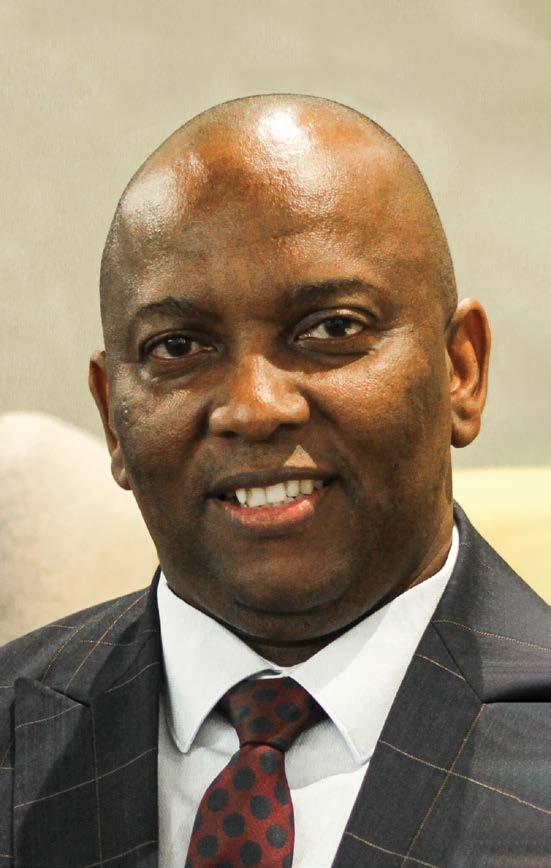
“We are conscious of the responsibility we have been given in piloting this new model for the development of SEZs,” says TASEZ CEO Dr Bheka Zulu.
TASEZ was established with a far-reaching vision – to create an entity that would be the benchmark for SEZs in South Africa and contribute to the growth of the automotive sector. The key objective of its existence is to be a significant creator of new businesses, contributing to South Africa’s socio-economic development through creating jobs and transforming the automotive manufacturing landscape.
Referred to as Africa’s first automotive city, the SEZ, based in Silverton, Pretoria, provides infrastructure and bespoke services to a range of automotive manufacturing sector investors. The SEZ provides world-class production facilities, steers investors towards tax incentives, and helps source well-trained workers.
One of the country’s newest 11 SEZs, TASEZ, was established during one of the most challenging times globally, against the backdrop of the COVID-19 pandemic and worldwide economic upheavals.
TASEZ bears testament to the doggedness of the people involved in setting up the SEZ, their ability to be flexible when challenges inevitably arise, and their innovative approach to problem-solving.
The idea of TASEZ gained traction when the Ford Motor Company of Southern Africa announced it would invest $1 billion USD in upgrading its facilities in South Africa. The company planned to increase its production from 160 000 vehicles a year to 200 000.
Simultaneously, the Department of Trade, Industry and Competition, the Gauteng government, and the City of Tshwane formed a close partnership to ensure the SEZ’s viability. Together, they provided the political will, the technical backing, and the administrative support required to make something of this magnitude successful.
The three government partners also contributed R3.92 billion financially to particular elements of the development, with the national government supporting the top structure, Gauteng providing for the internal bulk services linking the zone to the municipal structures, and the City of Tshwane helping with the external bulk services of water and power connections.
“This project could not have been done without the strong strategic partnerships between our investors, tenants and all three tiers of government,” says Dr Zulu.
Ford had a non-negotiable deadline to produce the first Next Generation Ranger in Silverton by November 2022. The clock was ticking.
The journey to meeting specific targets
The first sod turned at the TASEZ was on November 2019, when President Cyril Ramaphosa did the honours.
From that moment on, it was all systems go to ensure that TASEZ became an operable facility for the manufacturers of Ford components. Phase 1 plans were drafted and amended, construction began in earnest, and the incoming tenants’ requirements were identified and incorporated into the development. At the same time, roads to the facility were connected, along with the required power and water infrastructure.
Tenants acquired beneficial occupation in the zone in late 2021, with the practical completion in mid-2022.
As a new development, the focus was also on creating a zone that embraced the United Nations Sustainable Development Goals in helping end poverty, supporting green energy, and transferring skills to those previously excluded from the economic sectors.
While the physical infrastructure took shape, other aspects of TASEZ were equally being attended to, with consultations taking place with the local communities surrounding the project. No stone was left unturned in the efforts to make TASEZ a success.
As per the original plans, the first Ford Next Generation Ranger came off the production line in November 2022. Phase 1 of TASEZ was a go.
With that specific target being met, TASEZ could expand its focus more broadly to the strategic goals of helping grow the economy and transform the South African automotive industry, creating awareness and support for the development and growth of the automotive SEZ, attracting automotive and related industries and tenants to the SEZ,
and supporting socio-economic empowerment within the surrounding communities.
Phase 1 saw TASEZ creating 5 071 construction jobs (with 18% going to women, 60% going to youth, and 0.86% going to people with disabilities), 3 244 permanent jobs within the automotive manufacturing sector (with women representing 32%, youth 65.47%, and people with disabilities 0.83%), and 10 000 supply chain jobs. In addition, TASEZ provided small, medium, and micro enterprises (SMMEs) with R1.7 billion in contracts.
“South Africa sets great store on the SMME sector as a driver of economic development and growth,” Dr Zulu notes. In the National Development Plan (NDP) 2030, SMMEs are identified as having the potential to contribute between 60% to 80% to the country’s gross domestic product growth and employ 90% of the workforce. The NDP has set a target of 24 million people in employment by 2030, of which 21.6 million would be in SMMEs.
The following year saw TASEZ achieve a number of milestones: launching an initiative supporting women, youth, and disabled development, signing a partnership agreement with local communities through a social compact, hosting interested international investors, and sharing best practices on developing SEZs and their future contribution to the Africa Continental Free Trade Agreement (AfCFTA).
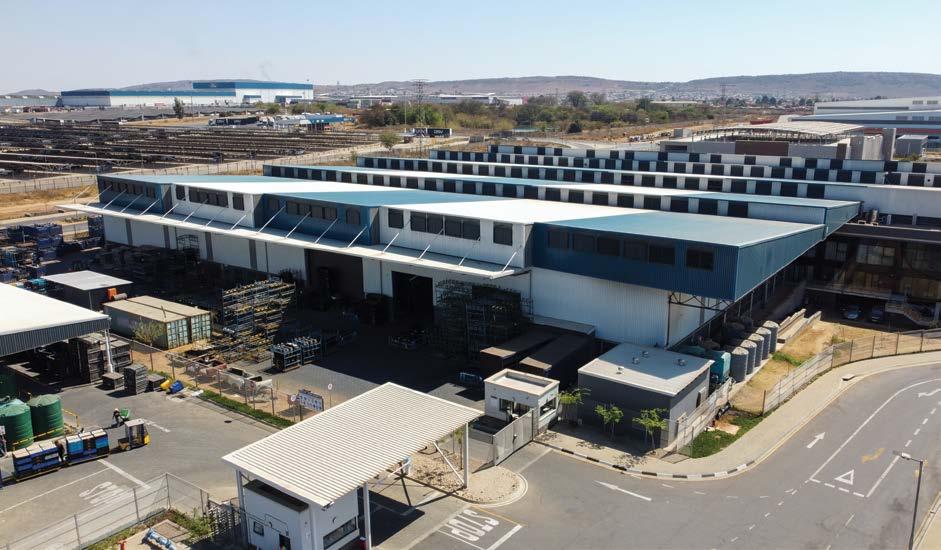
• TASEZ launched the Women of the SEZs initiative in September 2023 to empower women, champion diversity, foster inclusivity, and celebrate their achievements in all spheres of the SEZ space.
• TASEZ hosted delegates to the 15th annual BRICS Summit in Johannesburg in August 2023. BRICS, which consists of Brazil, Russia, India, China, and South Africa, comprises more than 40% of the global population and accounts for over 25% of the world’s economy.
• African partners from Uganda and Zimbabwe visited TASEZ to hear firsthand how TASEZ managed to grow from a vacant lot into a well-established manufacturing hub in such a short time.
• TASEZ and the Community Project Committee (CPC) signed a memorandum of understanding in February 2023, outlining the formal ties between TASEZ and the surrounding Mamelodi, Eersterust, and Nellmapius communities. TASEZ and the CPC are committed to working together to create job opportunities while building an inclusive automotive industry.
• August 2023 saw the company receive a clean audit from the Office of the Auditor-General. This was the third year the company received such a result.
• In September 2023, Zulu was recognised for his “inclusive leadership” at the Transport Evolution Africa Awards. The annual awards recognise “the achievements of transport trailblazers in making an impact locally, nationally and continentally.”
• December 2023 saw TASEZ receive another award: the Council for the Built Environment and the Construction
Education Training Authority honoured the SEZ as a state-owned entity that implemented infrastructure projects timeously. The award recognised TASEZ’s efforts to establish and develop Phase 1 of the SEZ during the Covid-19 pandemic.
As TASEZ begins to develop Phase 2, it is worth noting the importance of SEZs to South Africa’s industrialisation – they are intended to attract foreign and local direct investment by offering various incentives, enhance the country’s export capacity by providing a conducive environment to produce competitively priced goods, and generate employment opportunities, particularly where there is high unemployment.
“Youth development is a key component of our business case,” Dr Zulu adds, “with our SEZ helping boost the economies of our neighbouring communities, providing job opportunities and training programmes for young South Africans and emerging SMMEs.”
Phase 2 will see the expansion of TASEZ, which will focus on becoming a Centre of Excellence for current and future skills programmes, entrepreneurial incubation programmes, and high-tech education programmes based on the needs of the automotive manufacturing industry and the surrounding communities.
The first step in this direction is the establishment of the TASEZ Training Academy in partnership with various academic institutions, universities, industry-based agencies, professional bodies, the Quality Council For Trades and Occupations (QCTO), and various SETAs (sector education training authorities) such as MerSETA, SSETA, TETA, and the BANKSETA.
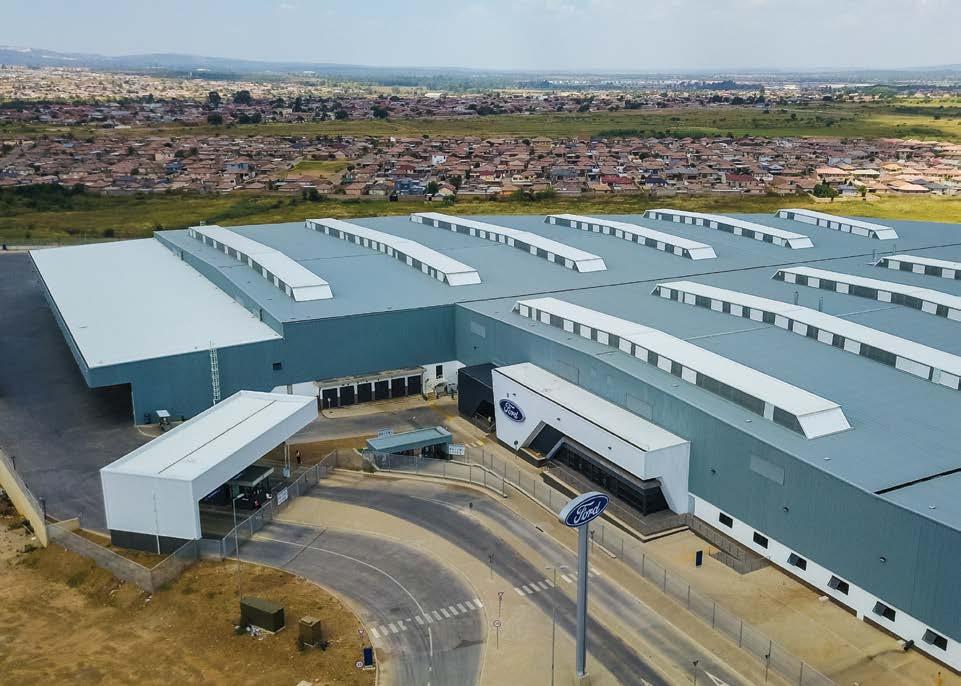
"As the SEZ continues to grow, more jobs will arise, along with SMME procurement opportunities."

2024 training targets
• 1 000 individuals – 60% women, 70% young people, 80% from local communities, and 2% people with disabilities;
• 40 small, medium and micro enterprises (SMMEs) in the automotive value chain;
• 40 SMMEs in the construction sector; and
• 2 200 people in learnerships, internships, skills development programmes, coaching, and mentorships through partnerships with the various SETAs.
We are planning to create an automotive incubation programme, which will focus on skills development in support of Tier 1 and Tier 2 suppliers along with expanding the hub and creating 3 000 new jobs."
So far, the SEZ has trained more than 445 people since the announcement of the TASEZ Training Academy.
TASEZ is well aware of the ever-evolving landscape of the automotive manufacturing industry, with New Energy
Vehicles just around the corner. It is also aware of the necessity to embrace Fourth Industrial Revolution skills in manufacturing and a keen awareness of the need to ensure that everything is done sustainably, with a built-in resilience.
As the SEZ continues to grow, more jobs will arise, along with SMME procurement opportunities.
“We are planning to create an automotive incubation programme, which will focus on skills development in support of Tier 1 and Tier 2 suppliers along with expanding the hub and creating 3 000 new jobs,” says Dr Zulu, adding: “What we need to be aware of is that these are not merely numbers and statistics to us – each job created, or project supported, represents real families and community members living secure lives with dignity and self-respect.”


Appalling conditions, including rampant cable theft and destruction across South Africa’s beleaguered rail network, are driving growth in the road freight space. However, this comes at a high environmental cost as greenhouse gas emissions rise.
By Bidvest International Logistics (BIL)

Earlier this year, Rirhandzu Mashava, the Department of Transport’s Deputy Director General For Transport Planning, revealed that between 2017-18 and 2022-23, about a third of long-distance freight had moved from rail to road.
The country’s rail infrastructure woes manifest at locations like Durban Container Terminal Pier 2.
According to figures released by the South African Association of Freight Forwarders/Business Unity South Africa, during the week ending July 12, the site had 65 over-border units with a dwell time of 22 days.
Supply chains can ill-afford such delays, hence the massive shift to transporting goods by truck. This is despite the rising fuel cost and a need for more skilled personnel within the sector, not to mention that deteriorating infrastructure and poor road conditions put drivers and vehicles at risk.

Environmental solutions
From an environmental perspective, the situation is far from ideal. Transport is the third largest emitting sector in South Africa, with almost 55 megatons of CO² emissions contributing more than 10% to the country’s national gross emissions. Road transport accounts for 91.2% of that percentage.
While the Department of Transport set in motion a Green Transport Strategy in 2018 to minimise the adverse impact of transport on the environment by reducing emissions by 5% annually, high volumes of greenhouse gas are still being pumped into the atmosphere.
The question then becomes what else can be done to reduce emissions. According to Bidvest International Logistics (BIL), solutions must come from the road and rail freight sectors.
BIL’s Overland Logistics Director Marcus Ellappan suggests some “quick wins” in reducing CO² emissions, including policies around behaviour changes to promote more efficient driving habits and optimising routes using various software platforms.
“Maintaining vehicles properly and upgrading to more fuel-efficient vehicles can also reduce fuel consumption.” Ellappan says electric trucks, compressed natural gas vehicles and a move to Euro 5 engines (where diesel vehicles are equipped with particulate filters to trap tiny soot particles) and Euro 6 engines (mandatory use of selective catalytic reduction for diesel cars to reduce nitrous oxide emissions) are all viable options.
Such measures will benefit road freight companies in several ways, including environmental, social, and governance (ESG) wins, reduced carbon tax, and reduced maintenance, resulting in less downtime, noise pollution and air pollution.
Developing an Integrated Transport Plan for a sustainable future
BIL Business Development Executive Ntombimpela Nong supports the efforts of the rail reform and capacity growth initiative driven by the government and Transnet. The reduction in rail capacity has resulted in increased reliance on road transport, putting additional pressure on road infrastructure and the environment.
“This can lead to higher transport costs, reduced competitiveness of South African goods, and missed economic opportunities,” she says.
However, Nong believes the rail freight industry can be crucial in driving a turnaround. She suggests that future investment in the railway should focus on modernising the rail infrastructure, together with green technologies such as hydrogen-powered and electric locomotives.
Earlier this year, it was announced that by April 2025, Transnet Freight Rail will have to compete with private companies to manage the country’s rail infrastructure. This comes after the government decided to open the space to private players to participate in the significant investment required for the railway network in South Africa.
“The Integrated Transport Plan (ITP) emphasises developing an interconnected multimodal transport system where rail and road work together to enhance overall efficiency and sustainability. A strengthened rail freight system can support and complement road transport, which remains crucial for last-mile deliveries, remote deliveries and shorter routes.”
She does not doubt that there is significant room for collaboration. Road freight can handle shorthaul and remote deliveries, while rail can manage long-haul routes, optimising the strengths of both modes. As a result, the road and rail industries can create a more resilient and eco-friendly transport system.

Are you in search of top-notch tyres for your vehicle? Look no further than Fundi Tyres, your go-to online tyre shop in South Africa. With a passion for delivering unparalleled quality and customer satisfaction, Fundi Tyres is committed to providing you with the best tyre shopping experience possible.
At Fundi Tyres, we understand that finding the perfect tyres for your vehicle can be a daunting task. That's why we've made it our mission to simplify the process and offer a user-friendly online platform. Whether you're searching by vehicle or tyre size, our intuitive search tools will help you find the ideal tyres for your specific needs in just a few clicks.
What sets Fundi Tyres apart is our unwavering commitment to building genuine customer relationships. We believe in going above and beyond traditional service, striving to understand your unique requirements and delivering on our promises. Our team of knowledgeable and friendly experts is always ready to assist you, ensuring that you make informed decisions and find the perfect tyres for your vehicle.
With two state-of-the-art branches conveniently located in Johannesburg and Pretoria, Fundi Tyres brings you the best of both worlds – the convenience of online shopping and the assurance of professional installation.
Our BestDrive Bryanston branch, situated on the corner of William Nicol and Grosvenor road, and our BestDrive Silverlakes branch at Hazeldean Square on Silver Lakes Road, are equipped with cutting-edge technology and staffed by skilled technicians who are dedicated to providing you with top-notch service.
At Fundi Tyres, we take pride in offering an extensive selection of premium and budget tyre brands, ensuring
that you have access to the highest quality products in the market. From renowned names to budget-friendly options, we have something to suit every vehicle and budget.
Our competitive pricing and regular tyre specials make it even more affordable to keep your vehicle running smoothly and safely.
Don't just take our word for it – join the countless satisfied customers who have made Fundi Tyres their trusted tyre destination. Experience the difference of exceptional service, quality products, and unbeatable convenience.
Visit our website at www.fundityres.co.za and discover why Fundi Tyres is the smart choice for all your tyre needs.

Stay connected with Fundi Tyres on social media and join the conversation.
FundiTyres
@fundityres
Martin Rautenbach
@FundiTyres on X (formerly Twitter)
#FundiTyres #tyres #wheels #cars #tires #automotive



Transform your construction operations with FUSO trucks, engineered to exceed expectations in the toughest environments. Our exclusive finance offer of Prime minus 3% interest rate, with the first payment due in 90 days and ensures cost-efficiency without compromise.
Limited-Time Offer: Take advantage of our special finance deal from June 3 to December 31, 2024. Empower your construction fleet with FUSO trucks and elevate your business to new heights. *Image for illustration purposes only. T&C’s Apply. For more information visit https://dtsa.daimlertruck.com/fuso/
Michelin has recently launched its latest research – Unlocking the Power Of TCO: A Fleet Manager’s Guide to Efficiency and Sustainability – an industry first aimed at shifting the mindsets of South African transporters to run more efficient and sustainable fleets.
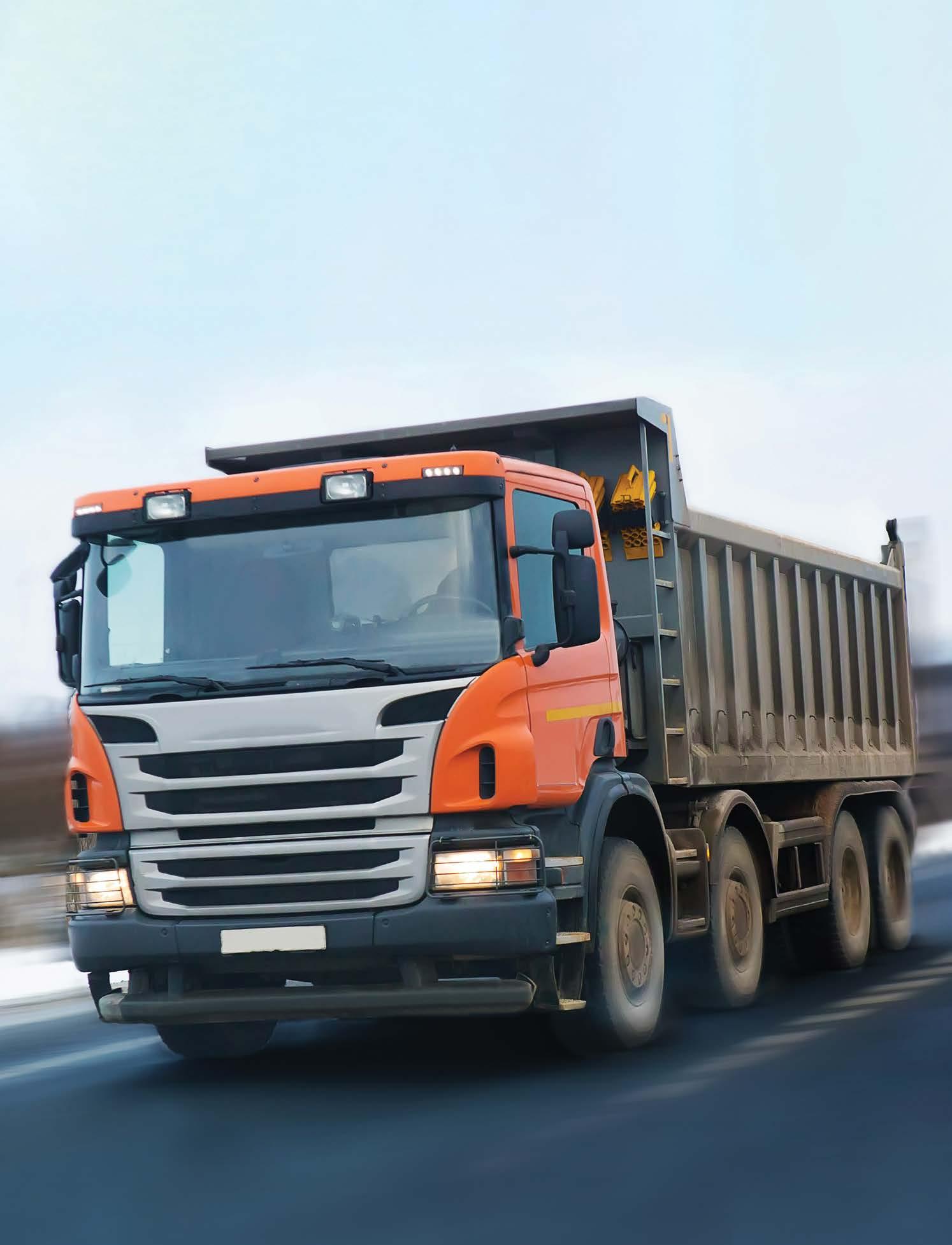
To put things into perspective, a fleet of 50 trucks can save R 1 331 050 annually by upgrading from grade B to grade A tyres with a low rolling resistance."
The 2023 Decarbonising South Africa’s Transport Sector report noted that, in South Africa, transport is the third largest emitting sector, with almost 55 Mt CO2 emissions contributing more than 10% to the country’s national gross emissions. This is true globally – the transport sector is one of the significant contributors to greenhouse gas emissions, with most transport today running off internal combustion engines powered by fossil fuels.
Many transport operators in the country deal with unique challenges, including rising fuel costs, loadshedding, safety and security, and other logistical issues. The reality is that many transport operators – especially small to medium-sized operators- have not yet begun to think about how they can run efficient, profitable and sustainable fleets.
“Currently, transport owners are not managing the operating costs of their businesses in a holistic manner. By looking at the cost of fuel, driver salaries, maintenance
Choosing quality tyres with low rolling resistance is one significant way to reduce fuel consumption – a transporter who can reduce rolling resistance by 1kg/t for a 40-ton truck can save more than two litres of fuel every 100km.
To put things into perspective, a fleet of 50 trucks can save R 1 331 050 annually by upgrading from grade B to grade A tyres with a low rolling resistance.
What’s more, Michelin’s suite of products and services also help transporters measure their carbon emissions – MICHELIN Connected Fleet enhances this capability by harnessing advanced systems to provide realtime data insights, allowing fleet operators to make smarter, more informed decisions that contribute to sustainability and efficiency.
“We know that the Carbon Tax is coming, and this will be another operating cost that fleet operators must
and repairs, purchasing or renting a truck and the cost of purchasing tyres individually, transport owners are unable to see how these often disparate parts of the business can impact each other and be managed better to reduce operating costs and improve sustainability,” comments Charl Lensley, B2B Director for the Truck and Bus Division at Michelin.
For example, approximately 30% of a transporter’s operating costs are towards fuel consumption and 25% towards salaries. Many transporters don’t know that purchasing the right tyres – which only account for 5% of a transporter’s operating costs – can reduce fuel consumption, time, and money lost from breakdowns and increase sustainability.
Fleet owners calculate the cost per kilometre (CPK) to optimise tyre expenses. They achieve this by selecting durable tyres that can be regrooved or retreaded for reuse. This is an impractical way of measuring tyres’ actual impact on a fleet business.
factor in. For smaller fleet operators who are currently under financial pressure – now is the time to manage their operating costs in a smart, holistic and sustainable way. Essentially, we are helping transporters solve tomorrow’s problems today,” continues Lensley.

“Michelin has always been at the forefront of sustainable and safe mobility; we are excited to introduce the Total Cost of Ownership way of thinking to the local market to help fleet operators realise that they can truly operate efficiently and sustainably – there no longer needs to be trade-off,” added Amaury Vadon – Michelin’s managing director for Sub-Saharan Africa.
Download and read the full Unlocking the Power Of TCO: A Fleet Manager’s Guide to Efficiency and Sustainability whitepaper: https://pro.africa.michelin.com/en/michelin-insights/total-cost-of-ownership
A strong contingent of industry leaders representing all modalities in the logistics sector, air, sea, road, rail, freight forwarders and e-commerce from the public and private sectors, gathered in Johannesburg to position an industry-wide collaborative drive to accelerate transformation for the logistics sector. This sector is at the forefront as a key contributor to the national economy, an enabler of trade and a central pillar of the country’s growth strategies.
Chairperson of the Logistics Network Transformational Group, Vincent Zikhali, says timing is a make-or-break factor in logistics.
“It is clear that, for South Africa to compete effectively on the world stage, capacity building, skills development and new capabilities are all fundamental for growth and stability, alongside the government’s imperative to restore and develop supporting infrastructure,” said Zikhali.
“To reinstate the country’s leadership position as a destination and gateway to Africa, we need to reawaken a culture of relentless improvement and continuous innovation, digitisation and automation. This is recognised as a collective imperative – so we should leave no one behind.”
Success in transformation for a broad and diverse sector, such as logistics, must be anchored by well-defined, unified principles. This is now made possible by what President Ramaphosa calls “the deepening partnership between
"The winds of change are already showing signs of positive realignment in critical areas of governance, policy, and economic stabilisation."

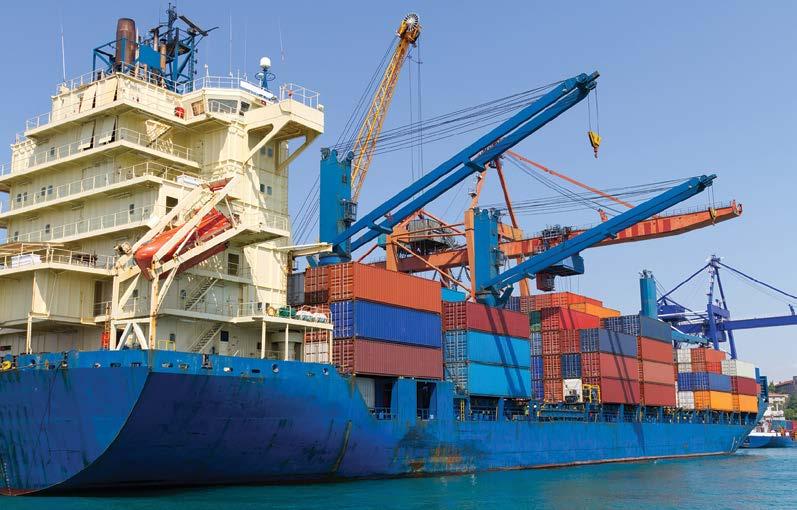

government and business” – a transformation and workin-progress, says Dr Juanita Maree, the Chief Executive Officer of SAAFF. “South Africa plays a significant role in continental and world logistics, a vantage position that must be strengthened,” commented Maree. “The pace of change and operational complexities of today threaten core transformational deliverables. It becomes clear that demanding unequivocal inclusivity right at the core of the sector’s overarching transformational strategy as undertaken by the meeting, sets the pace for the bigger picture.”
The introduction of sub-working groups was a vital and significant outcome. This structured approach will ensure that issues of transformation in the logistics sector and sub-sectors are systematically and efficiently addressed through unified strategies and collaborative solutions underpinned by open communication across all stakeholder circles.
Our nation has entered a most significant transformational phase. The winds of change are already showing signs of positive realignment in critical areas of governance, policy, and economic stabilisation. This is already impacting investor confidence here and abroad and lifting sentiment in the business sector. Transformation is not only a race and gender thing – it is an “all of us” thing, from international conglomerates to SMMEs.
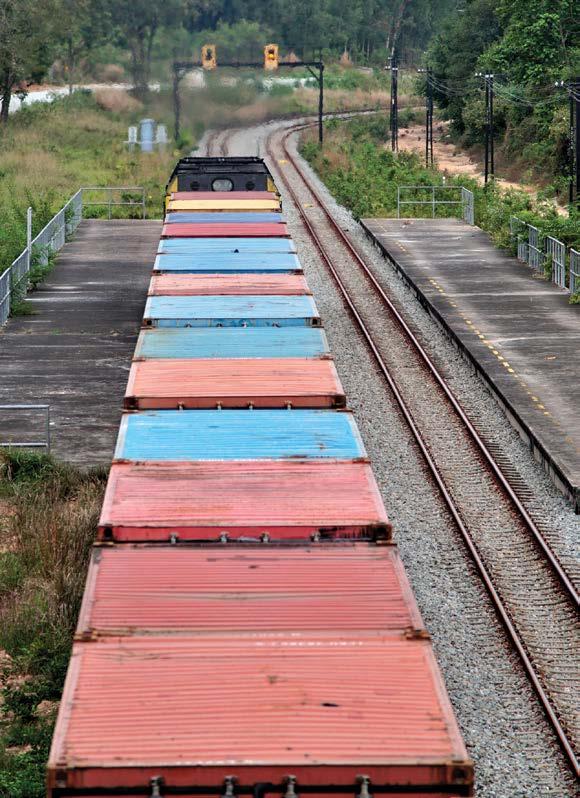
As an independent body, the Forum of the Transformation Working Group is tasked to provide the platform for dialogue and engagement going forward as all participants, together, get down to reinventing the logistics sector which is at the heart of the South African economy.
Unitrans Passenger’s ongoing commitment to gender diversity is paying off in Mpumalanga at the company’s Secunda Depot, which has achieved a higher-than-average ratio of female bus drivers.
“We believe in creating social and economic value through our business practices," says Grant Fleetwood, Executive Human Capital for Passenger at Unitrans. “Female bus drivers deliver several benefits to our operations, including improved safety and higher customer satisfaction. Moreover, we contribute to a more equitable society by promoting a diverse and inclusive workforce."
The transport sector, particularly driving roles, has traditionally been male-dominated. The Secunda Depot challenges this perception by demonstrating the significant impact of a more gender-equitable workforce. It operates 165 buses and employs 220 drivers, 72 of whom are women – 32% compared to the industry’s average of 5 to 10%.
“At Unitrans, we understand the transformative power of a diverse workforce. We will continue to champion gender diversity as we remain committed to creating a workplace where everyone is treated equally and has the opportunity to thrive,” says Fleetwood.

The employment of more women has also served as a means of economic empowerment in a town that has historically battled high unemployment rates."
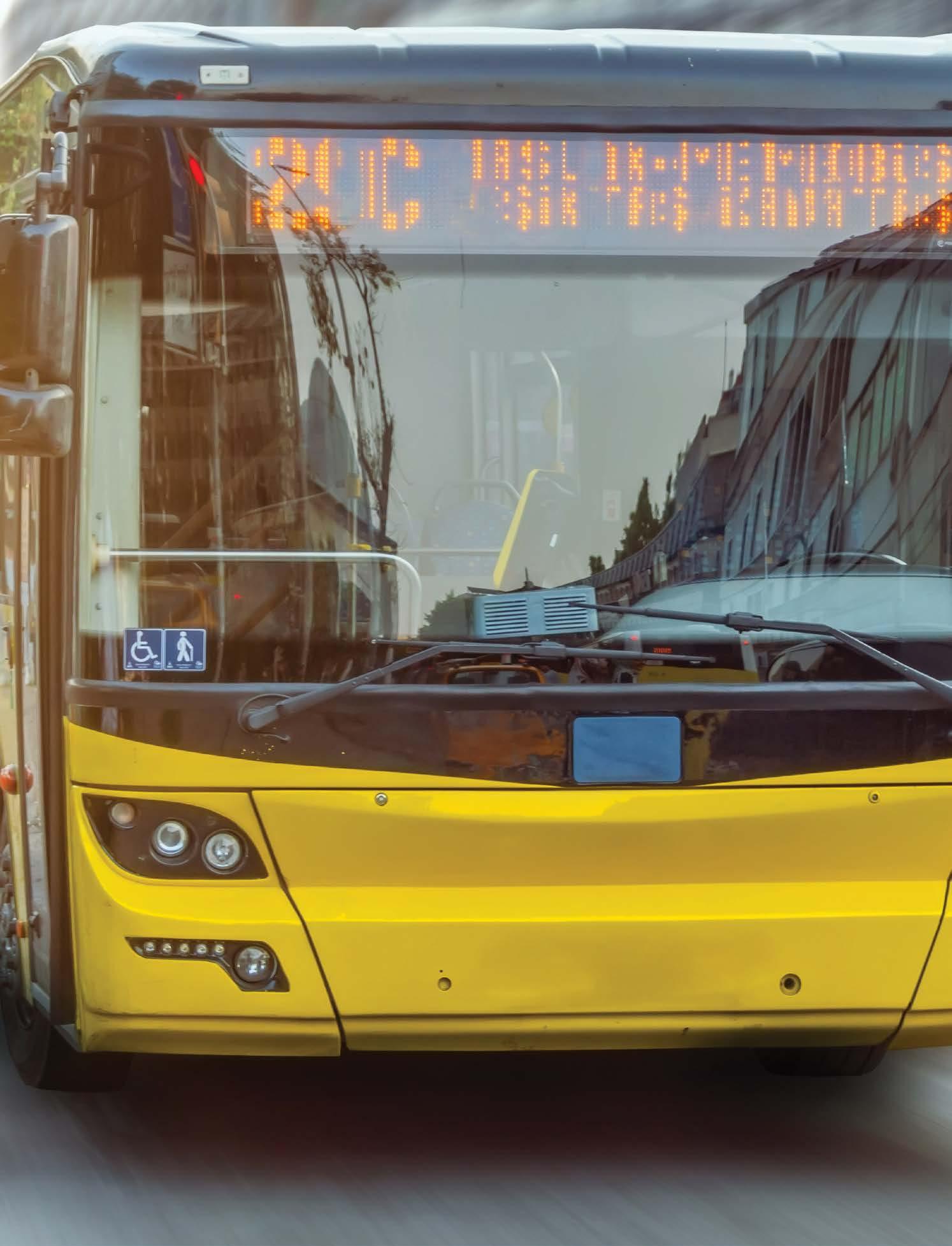

The company employs various strategies to attract women to its talent pool, including a professional driver learnership programme. “Through this learnership, we have successfully trained more female drivers and increased the number of women employed in our depots across the country," says Fleetwood. “We are also increasingly seeing that bus driving is no longer perceived as a maledominated field, and we are very proud of the women leading this change at Unitrans."
According to Andrew Lessing, Secunda Depot Manager, introducing more women to the driving fleet has contributed to the success and growth of the operation.
“It has enhanced performance as our female drivers bring different perspectives and

problem-solving approaches, contributing to improving customer satisfaction. It is a testament to what can be achieved with a genuine commitment to diversity and inclusivity."
The company has found that female drivers tend to approach their work thoughtfully and patiently, along with a strong sense of empathy. This is particularly helpful in roles that involve working closely with the public and handling various traffic situations.
Nompumelelo Mahlangu, who began her journey as a bus driver in 2015 and has since risen to the supervisor role, attributes the success of women drivers at the Secunda branch to more than just the prioritisation of diversity, equity and inclusion. She highlights the importance of fostering a supportive environment where women are empowered to thrive.
“The support for women has made all the difference. There's a culture here that encourages women to reach their full potential and that’s what enables their success."
According to Lessing, the female drivers show exemplary discipline, adaptability, and a keen understanding of the vehicles they operate. They often tend to be gentler on the fleet, which has reduced maintenance costs and improved overall efficiency.
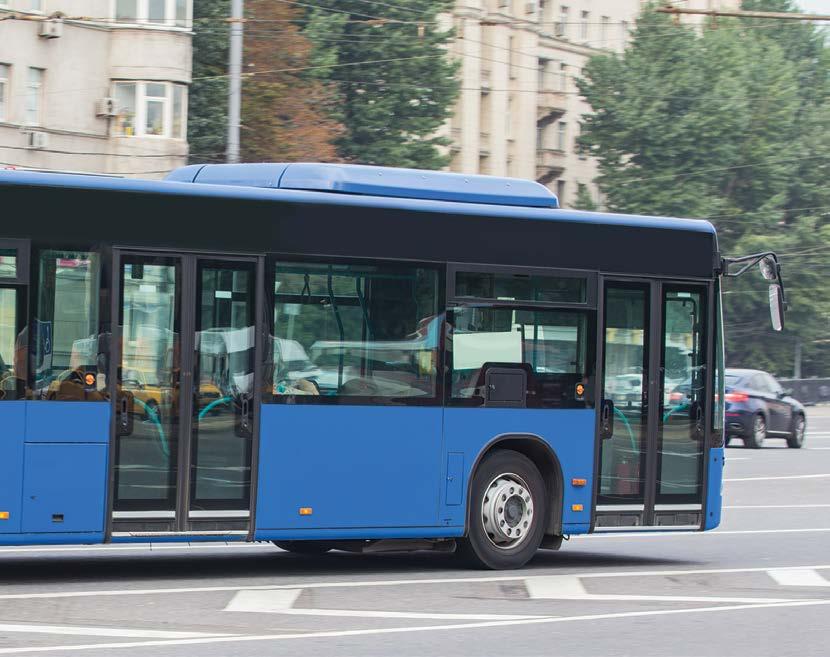
The employment of more women has also served as a means of economic empowerment in a town that has historically battled high unemployment rates. Providing women with stable and wellpaying jobs has assisted in addressing economic disparities and supporting women’s financial independence.
The Chartered Institute of Logistics and Transport: South Africa (CILTSA) and the Vaal University of Technology (VUT) have signed a groundbreaking Memorandum of Understanding (MoU), marking a significant step towards bridging the gap between academic knowledge and practical industry experience in the logistics and transport sector.
The MoU, signed on 19 August 2024 at the VUT Main Campus in Vanderbijlpark, formalises a partnership to enhance the academic and professional landscape of logistics and transport in South Africa.
The collaboration will revolutionise how VUT students engage with the logistics and transport industry, providing them invaluable practical insights and networking opportunities. The partnership will focus on developing supply chain capacity and capabilities through focused, results-oriented programmes and initiatives.
CILTSA president Elvin Harris emphasised the importance of the development: “This MoU represents a pivotal moment in our efforts to nurture the next generation of
• Access to CILTSA’s internationally recognised professional certifications for VUT staff and students, enhancing their competitiveness in the job market.
• Joint research initiatives addressing current challenges and innovations in logistics and transport.
• Mentorship programmes connecting students with industry professionals; guest lectures and site visits to provide students with first-hand industry exposure.
• Participation in annual VUT events, including graduation ceremonies and student conferences.
logistics and transport professionals. By combining VUT’s academic excellence with CILTSA's industry connections and practical expertise, we're creating a powerful platform for students to gain real-world experience and insights that will be crucial for their future careers.”
Prof Chengedzai Mafini, Executive Dean of the Faculty of Management Sciences at VUT and the driving force behind the MoU at VUT echoed Harris’ sentiment: “Our partnership with CILTSA is a game-changer for our students. It opens doors to logical knowledge, industry networks, and professional development opportunities that complement their academic studies. This collaboration will undoubtedly enhance our students' readiness for the challenges and opportunities in the logistics and transport sector.”
The partnership has already begun to bear fruit. At VUT’s recent autumn graduations, CILTSA sponsored awards for top-performing Logistics Management students, offering free memberships and year-long mentorship programmes to high achievers.
“Our aim is to create a seamless transition from academic learning to professional practice," added Harris. “The MoU is really about bridging the gap between academia and industry. While the students at VUT are already gaining academic knowledge, through CILT we hope to give them real, practical industry experience. Students will benefit from practical insights, access to the industry network and support, which will enable them to succeed in the logistics and transport industry.” www.ciltsa.org.za
Vertiv™ Environet™ Connect offers an easy-to-use interface with customisable views and flexible dashboarding that works on mobile and desktop environments.
As AI workloads pivot to the network edge, the need for enhanced visibility at these remote data centre sites has become increasingly apparent. Recognising this, Vertiv (NYSE: VRT), a leading provider of critical digital infrastructure and continuity solutions, has introduced Vertiv™ Environet™ Connect, a cloud-connected and webbased fleet management and monitoring solution. It features a device-agnostic interface that can handle diverse data centre infrastructure equipment across multiple locations, regardless of the manufacturer.
Environet Connect speeds the deployment of remote Vertiv equipment and improves its health and efficiency through mass provisioning and firmware updates of network management cards. The system's monitoring capability enhances the oversight of critical infrastructure and provides customisable and configurable alarm notifications. Monitoring covers UPS systems, rack power distribution units (PDUs), generators, and thermal units.
Expanding access to monitoring solutions
"Edge deployments are growing rapidly and may soon be driven by real-world AI applications such as large language models, predictive analytics, and autonomous vehicles. Although these applications currently operate in data centres, they may quickly shift to the edge to reduce latency and avoid processing bottlenecks," said Wesley Lim, vice president of software and digital solutions for Vertiv. "Implementing a secure, user-friendly, and webaccessible monitoring solution like Environet Connect would enhance operational visibility and maximise uptime for remote environments."
Environet Connect is accessible to direct customers and channel-managed service provider (MSP) partners. It accommodates all user types and is designed for multi-tenancy, simplifying the process for partners and customers.

Vertiv offers a series of services to enhance the Environet Connect user experience, with software training, customer help desk and asset management. The services include tiered levels, encompassing technical support, firmware updates, device provisioning, and remote monitoring.
Vertiv recently announced its end-to-end portfolio for High-Performance Compute (HPC) and AI deployments, Vertiv™ 360AI. The solutions include power, cooling, enclosures, end-to-end lifecycle services, and digitised management. Vertiv™ Environet™ Connect allows a common interface for the solutions within the AI ecosystem. www.vertiv.com
high-quality
Prioritising high-quality public transport data acquisition and collaborative enhancement is essential for nurturing inclusive and sustainable urban development in South Africa, writes Carike Karsten, Senior Industrial Engineer at the Council for Scientific and Industrial Research (CSIR).
inclusive and sustainable urban development in South Africa, writes Karsten Engineer the Council for Scientific and Industrial Research (CSIR).
Public transport is the backbone of daily commuting for millions in South Africa, acting as the critical link between homes, workplaces and myriad destinations. However, a significant shortfall exists in the quality and accessibility of public transport data. This deficiency hampers researchers, commuters and policymakers from making informed decisions and optimising the transportation network.
The public transport mosaic in South Africa is diverse, encompassing Bus Rapid Transit (BRT), governmentsubsidised buses, rail services and, notably, minibus taxis, which serve nearly 62% of the population. Despite the heavy reliance on these transport modes, data availability and quality are alarmingly inadequate. Commuters and transport modellers face barriers to accessing reliable information, which stifles effective urban planning and discourages potential users.
The absence of a standardised data collection and storage methodology is glaringly evident. Diverse agencies operate in silos, using varied systems and tools, such as Microsoft Word and Excel. This lack of uniformity leads to discrepancies in accuracy, completeness and frequency of updates, severely restricting an integrated view of the transport ecosystem. The adverse effects resonate across planning at metropolitan, provincial and

national levels, undermining the efficiency of the transportation system and the potential for growth and development.
Accurate, standardised data collection is paramount for strategic decision-making, performance evaluation and the successful implementation of policies. The 2021 National Transport Policy White Paper envisions a transportation system that is equitable, reliable, economically sustainable and environmentally friendly. Yet, the missing link is an integrated national transport database. Misaligned planning and investment due to inadequate data result in ineffective transport infrastructure development.

In a noteworthy effort to digitise bus data for the Gauteng Department of Roads and Transport, it emerged that the lack of a standardised approach among agencies leads to inconsistent data quality. Such fragmentation restricts the synthesis of a cohesive dataset, hampering a comprehensive understanding and optimisation of the transport network.


The trend towards smart transportation is redefining urban environments worldwide, allowing South Africa to embrace this transformation with the aid of the General Transit Feed Specification (GTFS). The benefits of implementing a standardised and accessible public transport data system are substantial. GTFS, an international standard for public transportation schedules and geographic information, enables efficient data sharing among agencies, passengers and researchers. However, the fragmentation of data collection methods and the commercialisation of data by private entities pose significant hurdles. Moreover, the absence of a centralised repository further complicates access to accurate and current information.
Addressing these challenges demands a collaborative approach among government agencies, private sector players and research institutions. By pooling resources and expertise, the quality and accessibility of transport data can be significantly improved, breaking down existing silos and fostering a data-rich environment.
High-quality transport data is invaluable for urban planning and helps to create a more integrated and equitable society with an optimised public transport network. Metrics such as service accessibility, infrastructure utilisation, affordability and equity can be accurately calculated, enabling targeted
infrastructure development and ensuring widespread accessibility.
A case study in Johannesburg showcases the profound impacts of having GTFS-format public transport data. An analysis of non-subsidised (Metrobus, BRT) and some government-subsidised buses revealed insightful trends. For instance, it showed that the average zone has access to about 10% of points of interest (POIs), with 75% of households having access to at least one POI type, provided they can afford R30 per trip. Interestingly, non-subsidised buses provided greater POI access than their subsidised counterparts, highlighting disparities possibly due to data availability.
Accessibility equity is vital for low-income households that predominantly depend on public transport. The case study highlighted underserved areas, accentuating the need for accurate data to identify strategic locations for network extensions. Such data facilitates crafting inclusive transportation infrastructure, ensuring broader service coverage.
Densifying households and employment opportunities along public transport corridors enhance accessibility and job availability. In Soweto, for instance, numerous densely populated regions remain inadequately served by the existing bus network. Accurate and comprehensive data is crucial to elucidating these gaps and informing decisions that improve network coverage.
Integrating standardised data systems like GTFS, coupled with stakeholder collaboration, is set to uplift transportation policy and practice dramatically.
Dynamic leader Simphiwe Masiza shares with South African Business Integrator how Empowaworx, a fully integrated marketing agency, in collaboration with clients, drives impactful transformation across diverse market segments.


What inspired you to start the business?
I’ve always been an entrepreneur at heart, and the key word here is “heart”. Empowaworx is rooted in the belief that everyone deserves an opportunity to transform their lives. I’ve been fortunate enough to receive such opportunities, and I wanted to create a business that serves as a platform for others to access their own paths to success. Empowaworx is about opening doors for those who need them most, whether it’s youth, women, or entrepreneurs.
How has it evolved?
What began as a bespoke project management, communications, and activations company has now become a fully integrated marketing agency. Over time, we’ve extensively expanded into a range of
empowerment platforms, such as EmpowaYouth, which started as a single event and now encompasses weeks and weekends of initiatives across the country.
Additionally, we have EmpowaWomen, EmpowaMen, and EmpowaEntrepreneurs – all highly transformational platforms that impact different market segments. Our evolution is constantly pushing to meet the growing needs of the people we serve.
Tell us about Empowaworx’s offerings and how they differ from others in the field. One of our core differentiators is our relentless focus on positive action. Everything we do is geared towards driving sustainable and meaningful change, whether for our clients or the communities we serve. When it comes
to our marketing services, we go beyond surface-level solutions. We immerse ourselves in our clients’ worlds, profoundly understanding their goals and creating authentic responses that address their challenges. Audacious thinking is part of our DNA, but consistency and authenticity underpin every project.
What are the critical drivers of empowerment, and how does Empowaworx unlock this for its partners and stakeholders?
Empowerment must respond directly to the real, relevant needs of those we aim to uplift. It’s not just about ticking boxes; it’s about making a tangible difference. At Empowaworx, we work closely with our clients to ensure that their empowerment initiatives are impactful and tailored to the specific needs of their target markets. Through our platforms, we create opportunities that drive fundamental transformation.
How does Empowaworx choose collaboration partners for events?
We cater to several key market segments: men of influence, women leaders, unemployed youth, and entrepreneurs. Our ecosystem is broad, providing access to a wide variety of networks. Organisations looking to engage with these dynamic sectors will benefit immensely from partnering with us.
How does Empowaworx work with clients to understand and deliver their vision?
We dive deep into our client’s goals, aligning ourselves with their vision. By collaborating closely and maintaining open communication channels, we ensure synergy between their objectives and our execution. This consistent alignment allows us to deliver impactful results.
What is critical to ensuring an event’s success? Effective project management is at the heart of any successful event. This includes detailed briefings for external suppliers and having a passionate, dedicated team on board. Content is equally critical – knowing the event’s goals and delivering a resonant message is vital. We work with highly skilled speakers who can effectively communicate these messages.
How do these events enable transformational impact?
A prime example is our EmpowaYouth platform, through
which we’ve impacted over 60 000 unemployed youth across the country by connecting them with jobs, training, and entrepreneurial funding. We set clear, robust KPIs for each event and ensure our strategies align with those goals to drive measurable impact. All of our platforms are geared towards achieving specific goals.
What trends do you foresee in PR, communications, branding, and events, and how is Empowaworx positioned to assist stakeholders in unlocking opportunities?
AI has emerged as a significant disruptor in the industry, and embracing it is essential. PR is becoming the new advertising, with an increasing emphasis on authentic voices and storytelling. Additionally, we’re witnessing a shift towards more niche, personalised marketing. Consumers are no longer defined by simple demographics like age or gender – their psychographic profiles, including their values and interests, are taking precedence. Empowaworx is well-positioned to help our stakeholders navigate these trends and turn them into opportunities, specifically through our deep understanding of our targeted market segments.
As a motivational speaker and change architect, what inspires you as a leader?
Authenticity continues to inspire me. In a world that often feels disconnected, genuine leadership and authentic voices have the power to resonate, especially with tomorrow's leaders. Seeing how authenticity can cut through the noise and create a lasting impact is inspiring.
What key insights have you gained on your leadership and entrepreneurial journey?
The most valuable lesson I’ve learned is never to stop evolving. Growth comes from continuous learning and perseverance. No meeting or pitch is wasted; each is an opportunity to refine, learn, and grow. Success comes from sticking to your convictions and consistently putting your best foot forward.
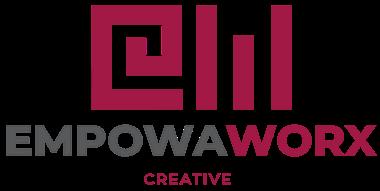
In an era where youth unemployment and gender disparities are pressing challenges, the need for strategic and impactful partnerships has never been more critical. Empowaworx’s commitment to bridging the gap between opportunity and potential is exemplified through our divisions, EmpowaYouth and EmpowaWomen. Together, we connect labour markets, civil society, and private and public sectors to empower young people and champion women’s inclusion across industries.
By Dumisile Le Roux, Acting General Manager of Empowaworx and Head of Empowayouth
Recent initiatives supported by the Transport Education and Training Authority (TETA) underscore this commitment. With a robust portfolio of youth and women empowerment programmes, TETA is at the forefront of transforming the transport industry.
For instance, TETA’s support for the upcoming EmpowaWomen in Transport Summit on October 2 at Sun City, in observation of National Transport Month, is a testament to the transformative power of strategic partnerships. This event will provide a platform for insightful discussions, networking opportunities, and workshops tailored to inspire women in a traditionally maledominated industry.
The leadership of Maphefo Anno-Frempong, TETA’s CEO, exemplifies the spirit of this initiative. The collaboration between TETA and Empowaworx extends beyond the transport sector. The upcoming Free-State Summit edition of Empowayouth, scheduled for September 26 to 28 in Thaba Nchu, aims to gather 1 500 young individuals for a transformative experience featuring esteemed speakers and diverse workshops. Following this, we will replicate this success in Cape Town between 24 and 26 October.
As I reflect on these initiatives, it becomes clear that the success of our programmes hinges on the strength of our partnerships. These alliances foster sustainable growth in the transport sector and pave the way for broader economic transformation. By focusing on marginalised communities, we create pathways for education, skills development, and entrepreneurship that will have lasting impacts.
At TETA, our belief in education and training as catalysts for change is unwavering. Our commitment to creating inclusive environments that empower both youth and women is a foundational principle of our mission. By elevating these key demographics, we are not just enhancing the transport sector – we are contributing to the societal shifts necessary for a more equitable future.
In conclusion, the journey towards empowerment and transformation cannot be undertaken in isolation. It requires the dedication of many to work together strategically. As we continue to foster these partnerships, let us remember that every collaboration has the potential to spark meaningful change in the lives of young people and women across South Africa.
Together, we can ensure that everyone is empowered to reach their fullest potential and contribute to a thriving economy. To register for the Empowayouth Summits and the EmpowaWomen in Transport Summits, visit: www.empowaworx.co.za.


Award-winning entrepreneur Miskyah Toth, CEO of Business Directive Contract Services (BDCS), shares insights with South African Business Integrator about the HR sector’s future and its strategic role in achieving business objectives.

Tell us a bit about the evolution of the HR field. The HR field has had to evolve rapidly, particularly in the face of global challenges like remote work, the economic downturn, and advancements in technology. We’ve seen HR shift from a traditional administrative function to a core strategic partner within businesses. HR professionals have had to adopt agile approaches, focusing on hybrid work models, mental health support, and digital transformation. Embracing technology has been crucial in streamlining hiring processes or using data analytics to improve employee engagement and productivity.
What is required from the HR field to enable organisations to optimise efficiencies?
HR must become a driver of innovation and efficiency. This involves fostering a culture of continuous learning, building resilience, and using data to make informed decisions. The ability to adapt quickly to changing market conditions will be essential. HR must support leadership in driving organisational culture and aligning workforce strategies with business objectives.
What trends do you notice with companies transforming their HR teams and processes? Companies are increasingly investing in upskilling their HR teams, focusing on data-driven decision-making and the integration of AI into their processes. There’s a strong
trend toward making HR more agile, with cross-functional teams working together to implement digital HR solutions. Another major trend is the focus on employee wellness and mental health, especially in light of remote work challenges. Companies are also using cloud-based HR platforms for more excellent stability and efficiency.
How can HR play a more strategic role in an everevolving business landscape?
HR can play a strategic role by being a business partner that drives the organisation’s culture and talent management strategies. This involves understanding the broader business objectives and aligning HR policies and initiatives accordingly. HR must also focus on data analysis to provide insights leading to better decision-making and performance management. By being at the forefront of change management, HR can help organisations navigate disruptions, retain top talent, and remain competitive.
Talk to us a bit about digitisation and AI. Digitisation and AI are fundamentally changing how HR operates. They are automating routine tasks, allowing HR professionals to focus on more strategic activities like employee engagement and talent development. AI is revolutionising recruitment through tools that analyse vast data to identify the best candidate, improving efficiency and reducing bias.
I foresee a stronger push towards predictive analytics, where HR can anticipate workforce needs and trends before they happen. HR teams must be comfortable using AI tools to automate repetitive tasks and focus on human-centred strategies that enhance the employee experience. HR departments must also proactively adopt continuous learning systems, ensuring employees are future-ready.
Locally, there’s growing interest in AI initiatives, although some organisations may be slow to adopt them due to cost or lack of awareness. The pros include greater efficiency, better decision-making, and the ability to personalise employee experiences. However, the cons involve potential job displacement and ethical concerns around data privacy and bias.
On the website it says, “Investing in people rather than buildings…” Please elaborate. The phrase “Investing in people rather than buildings” reflects BDCS’s belief that the actual value of a company lies in its people, not its physical assets. Buildings and infrastructure are important but don’t drive innovation, creativity, or sustained growth – people do. We prioritise building a culture that nurtures talent, fosters collaboration, and empowers individuals. BDCS helps organisations by providing tailored recruitment solutions, leadership development programmes, and consulting services that ensure businesses have the right talent to thrive. We focus on long-term growth by investing in people’s potential, skills, and well-being, yielding higher productivity and employee satisfaction.
Tell us a bit about your various businesses. BDCS focuses on talent recruitment and workforce solutions, ensuring businesses have the right human capital. Let’s Talk Business is a platform for connecting entrepreneurs, sharing insights, and facilitating collaboration among industry leaders. Women 4 Change focuses on empowering women, supporting them in breaking barriers, and driving social and economic progress. Miskyah.com, my brand, ties these initiatives together, offering a space to share my thoughts, experiences, and strategies on leadership, entrepreneurship, and innovation. These ventures share a common vision: empowering individuals, fostering leadership, and promoting innovation in business.
What have been the major highlights of your leadership journey?
One of the biggest highlights has been the rapid growth of BDCS, especially during such turbulent times. Being named one of Africa’s Top Most Empowering Business Women and the Top Global Business Leader for 2024 has been a significant milestone. However, the greatest joy has come from seeing the positive impact BDCS and my other ventures have had on people – helping individuals and organisations succeed is what drives me. Another highlight has been the expansion into digital platforms like Let’s Talk Business and Women 4 Change, which have created a broader platform to advocate for inclusive leadership and business practices.
What key lessons have you learned as a leader?
One of the key lessons I’ve learned is the importance of adaptability. The business environment is constantly evolving, and as a leader, you have to be ready to pivot when necessary. I’ve also learned the value of empathy and understanding in leadership, especially in the people-focused industry. Listening to your team, understanding their needs, and fostering a supportive work culture translates directly into productivity and innovation.
What is vital to empowering individuals for business success?
Empowerment starts with trust and allowing people to take ownership of their work. It’s essential to provide opportunities for continuous learning and personal growth and to create a supportive environment where people feel confident to take risks and innovate. Clear communication and feedback are also critical, as they help individuals understand their strengths and areas for improvement. Lastly, recognising and celebrating achievements – no matter how small – go a long way in motivating people and fostering a culture of success.


Technology has been pivotal in transforming the HR field and will continue to be so. With the advent of Industry 4.0 and the forthcoming Industry 5.0, we anticipate even more substantial advancements that will enable us to redefine the future of HR and its contribution to organisations.
By Mandisi Dube, Client Executive at 21st Century and Jaén Beelders, Executive Director of 21st Century Analytics
From recruitment and onboarding to performance management and employee engagement, innovative HR technologies offer countless opportunities to streamline processes, enhance efficiency, and elevate the employee experience. With the constant evolution of technology, HR professionals need to keep themselves informed about the latest trends and innovations to remain competitive in the dynamic field of HR management.
Technology plays an increasingly direct role in employees’ daily tasks and collaborative efforts in

remote and hybrid work environments," notes David Cearley, Distinguished VP Analyst at Gartner. “However, HR leaders are now faced with the growing necessity to approach their technology investments more cautiously than before, considering factors like privacy and ethical considerations stemming from the heightened reliance on technology.
Although HR technology adoption may be a daunting task, here are five essential steps for HR Professionals to adopt new HR technology.

With the constant evolution of technology, HR professionals need to keep themselves informed about the latest trends and innovations to remain competitive in the dynamic field of HR management.
Identify the needs and objectives of your organisation
Research and select the correct technology 2
HR specialists should do an in-depth study to examine the various HR technology options after having a firm grasp of the organisation's needs. The market is flooded with possibilities, ranging from employee engagement platforms and performance management software to applicant tracking systems (ATS) and human resource information systems (HRIS). Consider features, cost-effectiveness, scalability, ease of use, and integration potential while comparing various options. Involve essential parties, such as IT specialists and end users, to obtain feedback and guarantee conformity with corporate objectives
It's essential to fully comprehend the organisation's unique needs and objectives before implementing new HR technologies. Determine the intended results of introducing new technology, pinpoint pain points, and thoroughly audit the current HR procedures. Whether the objective is to optimise performance management, increase employee engagement, or improve recruitment efficiency, knowing the exact goals will help you make decisions and carry them out
Provide comprehensive training and support 1 3
Adequate training and support are necessary to guarantee the seamless adoption and user competency of new HR technology during the transition. Create a thorough training programme that meets the various needs of staff members from multiple departments and skill levels. Provide interactive training sessions, workshops, online guides, and other materials to acquaint users with the new technology’s features and capabilities. Create a support system as well, with an IT helpdesk and assigned HR technology advocates who can answer questions, troubleshoot problems, and offer continuous aid to users.
Encourage continuous feedback
Adopting new HR technology should be viewed as an iterative process rather than a one-time implementation. Encourage open communication and employee feedback regarding their experience with the latest technology. Regularly solicit feedback through surveys, focus groups, or one-on-one discussions to identify areas for improvement and address any challenges or concerns that may arise. Leverage feedback to make necessary adjustments, refine processes, and enhance user experience over time. By fostering a culture of continuous improvement, HR professionals can ensure that the technology remains aligned with evolving organisational needs and delivers maximum value.
Encourage open communication and employee feedback regarding their experience with the latest technology.
In conclusion, adopting new HR technology is a journey that requires careful planning, strategic implementation, and ongoing adaptation. Ultimately, while there is excitement around top technology trends, HR leaders must strive to understand their technology needs and capabilities. This involves making decisions in collaboration with different functions of their organisation rather than in isolation. By following these five steps, HR professionals can effectively navigate the challenges of adopting new technology and leverage its full potential to drive organisational success, enhance employee experiences, and stay ahead in a competitive business environment. Embrace change, empower employees, and harness the transformative power of technology to shape the future of HR.
To gauge the effectiveness of new HR technology and justify the investment, HR professionals must establish key performance indicators (KPIs) and metrics to track progress and measure return on investment (ROI). Monitor key metrics such as time-to-fill for recruitment, employee satisfaction scores, turnover rates, productivity levels, and cost savings attributable to the new technology. Analyse data regularly to assess the impact of the technology on HR processes, employee engagement, and overall organisational performance. Use insights from performance metrics to make data-driven decisions, optimise processes, and demonstrate the value of HR technology initiatives to stakeholders.

Digital Marketing
Search Engine Optimisation (SEO)


In the rapidly evolving business landscape, staying ahead requires more than just keeping pace—it demands foresight, creativity, and execution that set you apart. At Purple Square Media, we are the catalyst that transforms your vision into a compelling reality. Whether you’re looking to captivate your audience, enhance your brand’s presence, or drive meaningful engagement, we deliver results that matter.
Harness the power of cutting-edge technologies and the latest marketing trends. We lead with creativity, ensuring your brand stays ahead of the curve.
With a team of seasoned professionals, our strategies are grounded in experience and driven by results. Your brand's success is our priority.
Tailored
No two brands are the same. We offer bespoke solutions to meet your unique needs and resonate with your target audience.
From concept to execution, we manage every campaign detail so you can focus on what you do best—running your business.
Don’t let your brand blend into the background. Partner with Purple Square Media and watch your business soar to new heights. We’re here to turn your ideas into impactful experiences that captivate, inspire, and drive success.
Social Media Marketing
Content Marketing
Pay-Per-Click (PPC) Advertising
Email Marketing
Content Creation
Photo and Video production and editing Graphic design services.
Copywriting.
Multimedia content production (podcasts, webinars ).
Event Management
Trade show and exhibition management. Corporate event planning and execution.
Product launch events.
Virtual event organisation.
Advertising Services
Traditional advertising (TV, radio, print).
Digital advertising (PPC, display ads, social media ads).
Outdoor advertising (billboards, transit ads).
Media buying and planning.



The rapid pace of technological advancement, globalisation, and changing market dynamics are reshaping the world of work and the skills needed to remain relevant. What’s the most critical skill right now? The ability and willingness to adapt to changing rules. This includes the ability to think, do, and connect and engage with others differently.
By Anton Visser, Group COO of SA Business School
The experts suggest that the key to individual success will be continuous learning and adaptability while leveraging the power of technology and AI to augment skills and capabilities in virtually every job role.
To stay competitive, businesses need workforces that are dynamic, resilient and equipped with skills that are suitable for future use. Reskilling and upskilling your people while fostering a culture of innovation and continuous learning is the difference between business survival and obsoletion.
Does anyone remember Kodak, Blackberry, Nokia or Blockbusters? They were big – in the 2000s. When you look at the rapid pace of change and monumental shifts in industries, you’ll understand how critical it is to have an upskilling and reskilling strategy for your employees if you’re serious about business competitiveness and innovation.
For example, predictive analytics is used in finance, healthcare, and marketing to anticipate trends and behaviours, which means human beings must understand data science and analytics tools. Logistics and procurement professionals must learn how to implement and use blockchain solutions. Augmented Reality and Virtual Reality are changing the nature of training across industries, from medical simulations to manufacturing processes, demanding new skills from training providers and developers. Biotechnology is improving crop yields and resistance – so different biotech applications and abilities are needed in agriculture.

"Logistics and procurement professionals must learn how to implement and use blockchain solutions."
Given the rapid pace of change and the consequent need to reskill employees, we at SA Business School believe that a commitment to continuous learning is a key performance indicator. Here’s some guidance on how to approach your reskilling/upskilling strategy as a continuum rather than as a one-off-event:
1
Work with your L&D training provider to conduct skills audits and gap analyses. These will help you to identify current and future skills in the context of your organisation’s strategic goals. A data-driven approach is helpful because it yields L&D initiatives supporting growth and success for your business and your people.
Develop tailored programmes
Based on the skills gaps you identify, create customised training modules that address the specific needs of employees and the business. This could include technical training, soft skills development or leadership training. Collaborate with accredited learning and development specialists to ensure quality, relevance and alignment with business objectives and individual career ambitions.
As your workforce develops and grows, and your people need to diversify their skill sets, skills programmes become invaluable tools in providing short, focused learning interventions to close identified skills gaps. For example, you might offer finance for non-finance managers, customer service, conflict management, change management, team management, or ethics training.
SA Business School is currently seeing significant demand for programmes that develop power skills such as resilience, adaptability, creativity, collaboration and problem-solving. Because they enable people to navigate the complex work environment, these skills are becoming increasingly important as our world becomes increasingly tech-driven.
Encourage continuous learning
Promote a culture of ongoing improvement by supporting employees in pursuing formal and informal education, professional development and training. A robust and flexible learning culture also helps employer brands to attract and retain top talent.
Commit to mentorship
Pair employees with mentors, coaches or guides who can provide direction and share expertise. Establish internal programmes to help employees transition into new roles - and you’ll build their confidence as they take on new challenges.
Leverage technology
Use e-learning platforms and blended learning models to create interactive and flexible learning experiences. Blended learning methods like online modules, webinars, Augmented Reality and video tutorials can overcome geographical barriers, allowing companies to train employees across diverse locations, time zones and work schedules.


It’s also essential to allay employee fears about technology. While AI will make some jobs redundant, employees can acquire new and crucial skills that AI will unlikely replace anytime soon. However, those humans who refuse to embrace and leverage tech may be replaced by another human who leans in.
Create career pathways
Develop clear pathways that outline the progression from current roles to new or advanced positions. Communicate these pathways to employees and offer the necessary support and resources to help them navigate the journey. By designing people-centric L&D solutions catering to individual preferences, motivations and goals, you empower employees with choice, autonomy and feedback that boosts engagement and impact.
Return to step 1: assess skill gaps
Your L&D strategy should help your organisation cultivate a space where everyone is enthusiastic about continuous development and learning, where every employee can realise their full potential, and your workforce is prepared for the future. Enhancing the skills and capabilities of your workforce is a springboard to increased innovation, productivity and competitiveness in an ever-evolving market.
Look to work with a learning and development partner that builds bespoke learning and development solutions that meet your business's and its people's specific needs, considering human capital, capacities and budget allocations – laying robust foundations for your people to fill meaningful, sustainable, future-fit roles.

In the competitive world of destination marketing, South African Tourism (SA Tourism) is setting itself apart by innovatively promoting the country as a premier destination for benefits for local businesses.
Through targeted marketing campaigns and a comprehensive bid support programme, the South African National Convention Bureau (SANCB), a business unit of SA Tourism, has contributed considerably to the growth of the country’s multi-billion rand meetings, incentives, conferences, and exhibitions (MICE) industry.
All these efforts have cemented South Africa’s stature as the top business events destination, as confirmed by independent rankings. The 2023 International Congress and Convention Association (ICCA) Global Ranking Report, released in May 2024, ranked South Africa as the top business events destination in Africa and the Middle East.
Last year, South Africa hosted 98 ICCA-qualified international and regional association meetings and conferences, generating an estimated economic impact of over R2 billion. Tourism’s interconnectedness with various sectors in the value chain means that this economic impact of hosting business events extends beyond the industry itself, with sectors like manufacturing and agriculture also gaining from the increased demand.
The SANCB, through the Department of Tourism’s Tourism Incentive Programme (TIP), directly supports tourism businesses, particularly SMMEs, through specialised programmes. These initiatives offer market access and equip businesses with the skills and knowledge to effectively market their products and services.


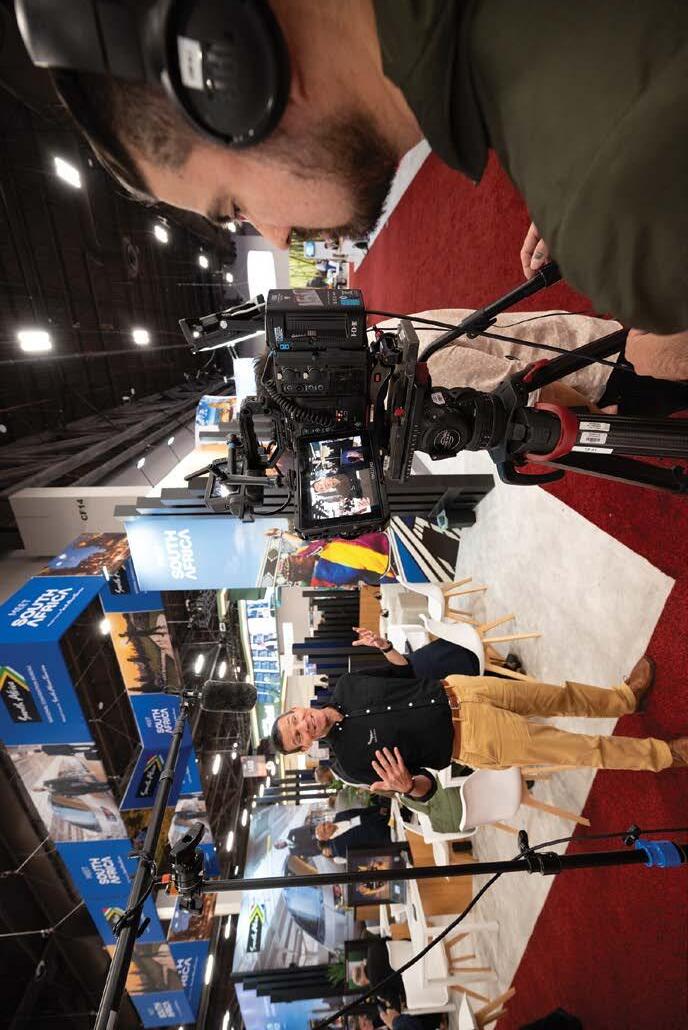



SA Tourism leverages its presence at international trade shows to provide a platform for SMMEs and exhibitors

This cohort included established companies and convention centres, such as the Durban ICC and Cape Town ICC, small tour operators and destination marketing companies from various parts of the country.
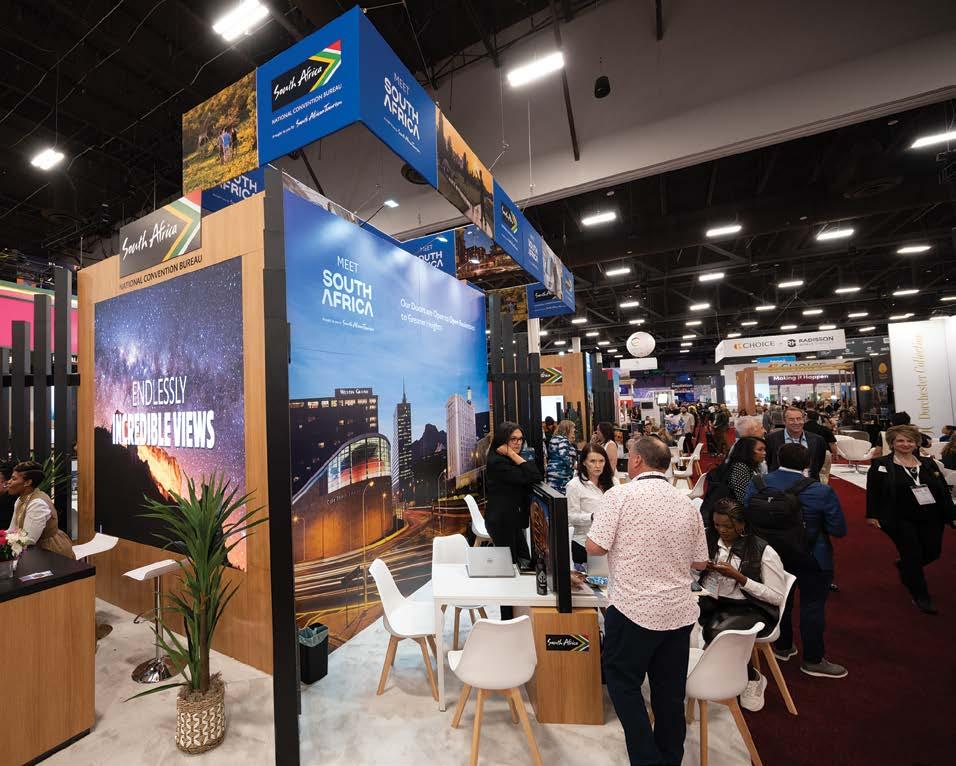

"SA Tourism leverages its presence at international trade shows to provide a platform for SMMEs and exhibitors to engage directly with global buyers."

Like the previous year’s South African delegation, which generated over 200 leads at IMEX America 2023, the 2024 stand sharers and exhibitors on the South African


Through collaboration with industry associations, venue operators, government, Destination Management Companies (DMCs), and professional conference organisers, SANCB continues to invest energy and resources to attract and secure
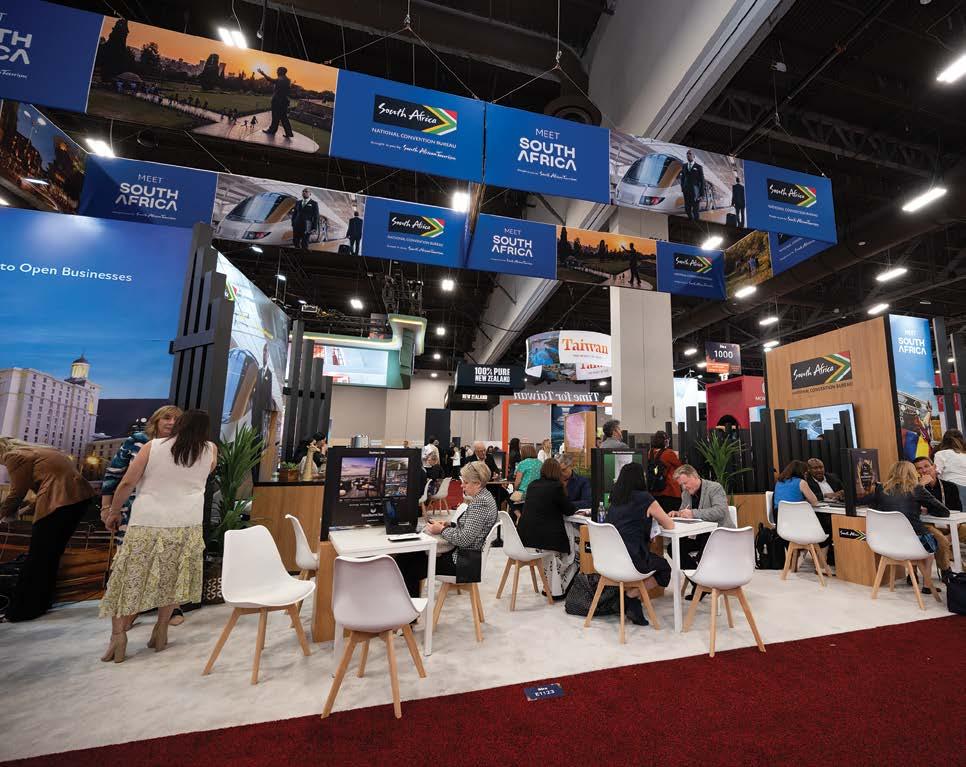
The Tourism Grading Council of South Africa (TGCSA) continues its grading assessments across tourism establishments nationwide. In September, celebrated as Tourism Month, five establishments achieved the prestigious “Premium” status, while two were designated as “Benchmark” properties. These accolades highlight establishments that exemplify luxury and exceptional service, setting new benchmarks for the South African hospitality industry.
As South Africa’s sole officially recognised quality assurance body for tourism products, TGCSA’s grading is a trusted indicator for discerning travellers and industry professionals. It offers an essential guide to top-tier accommodations, whether one seeks the elegance of boutique hotels, the charm of B&Bs, the exclusivity of safari lodges, or the sophistication of MESE (Meetings, Exhibitions and Special Events) venues.
THIS MONTH’S PREMIUM AWARDS CELEBRATE THE EXCEPTIONAL QUALITY AND SERVICE OF THE FOLLOWING PROPERTIES.
Cheetah Plains Private Game Reserve
Nestled in the Sabi Sand Nature Reserve next to Kruger National Park, this property offers exclusive-use villas with private guides and chefs. Guests experience eco-luxury safaris in electric vehicles, blending sustainability with the untamed beauty of the African wilderness.
La Residence Hotel and Villas
Located in the Franschhoek Valley, this opulent 30-acre estate boasts elegant interiors and stunning vineyard views, perfect for those seeking a lavish escape in the Cape Winelands.
Morukuru Beach Lodge
This intimate five-bedroom lodge in the De Hoop Nature Reserve offers a secluded beach house experience with eco-friendly design and exceptional whale-watching opportunities, ideal for nature enthusiasts.
Morukuru Ocean House
Also in De Hoop, this off-grid, four-bedroom exclusive-use property provides a unique coastal retreat, combining luxury with a commitment to sustainable living.
Jabulani Safari
Situated in Kapama Private Game Reserve, Jabulani is
"Our goal is not just to award stars but to elevate the visitor experience," stated Bronwen Auret, Chief Quality Assurance Officer at TGCSA. "We seek out properties that offer something truly special, where every detail is designed to enhance the guest's journey.” She added, "Star grading applies to all property levels, from 1 to 5 stars. Premium status is awarded when a property surpasses 5-star expectations by delivering an exceptional experience or service."
renowned for its elephant care programme. It offers an intimate safari experience, complete with personalised service and conservation efforts.
BENCHMARK PROPERTIES INCLUDE:
The Royal Mukumbura Malelane
Overlooking the Crocodile River and Kruger National Park, this boutique hotel offers luxurious accommodations and stunning wildlife views, ideal for a refined safari experience.
Tshiberry B&B
Set in Phokeng Village, Rustenburg, this 5-star B&B combines village charm with sophisticated amenities, providing warm hospitality amidst the tranquil setting of the Tshufi Mountain foothills.
"These properties represent the pinnacle of luxury accommodation in South Africa, each offering unique experiences in stunning locations across the country,” concluded Auret.
